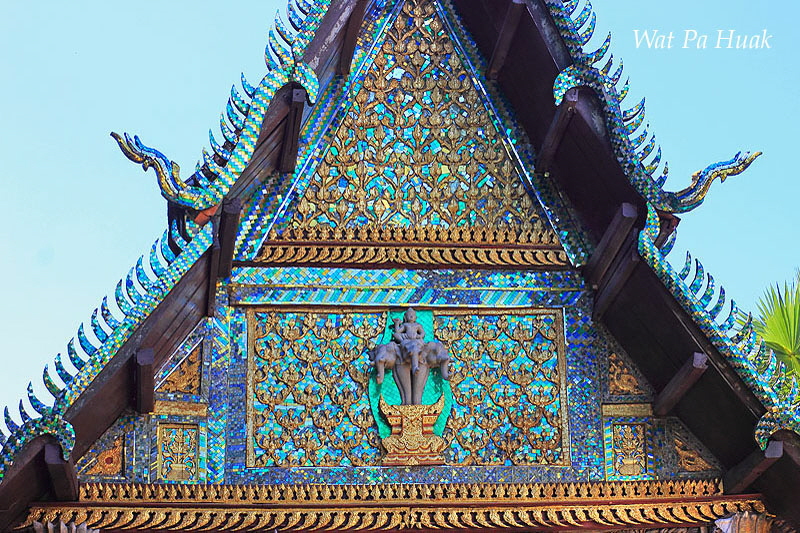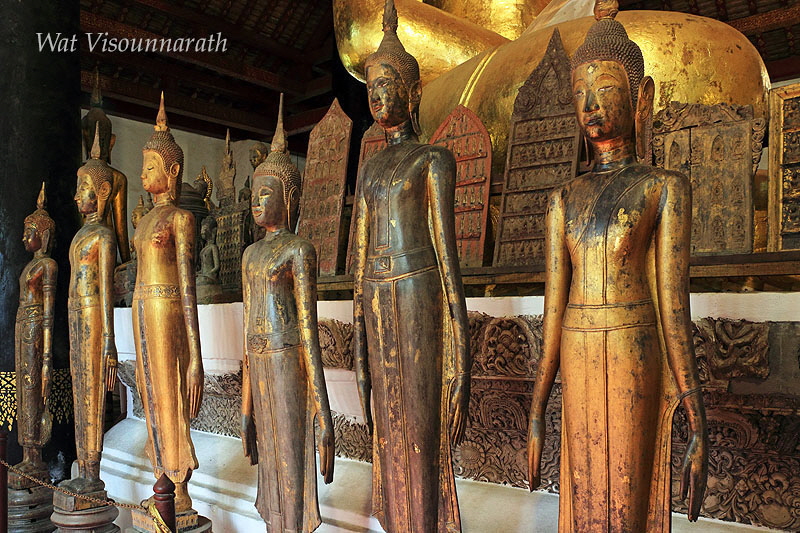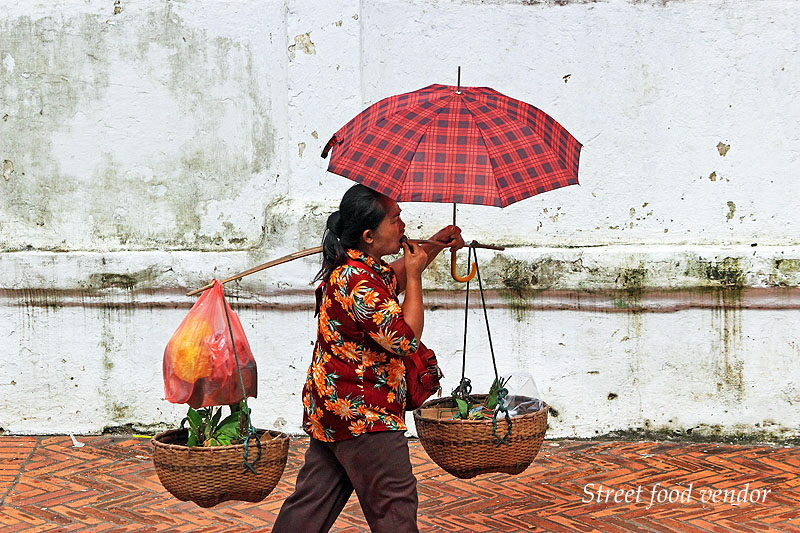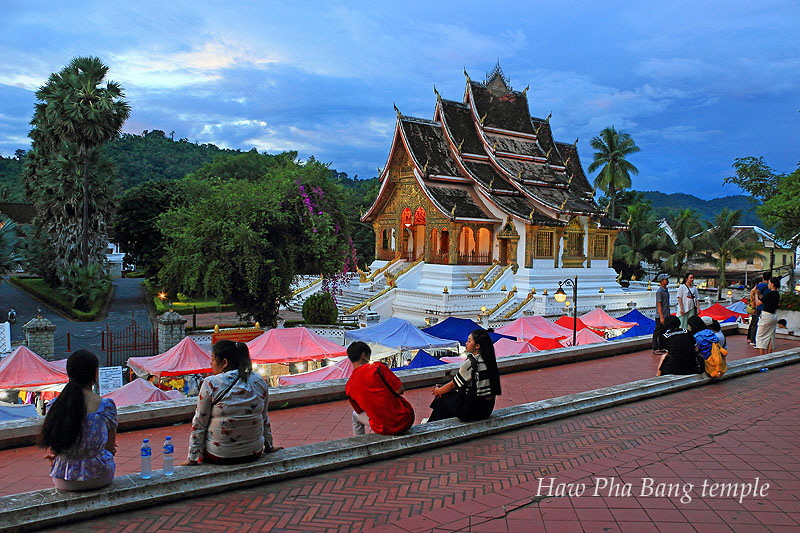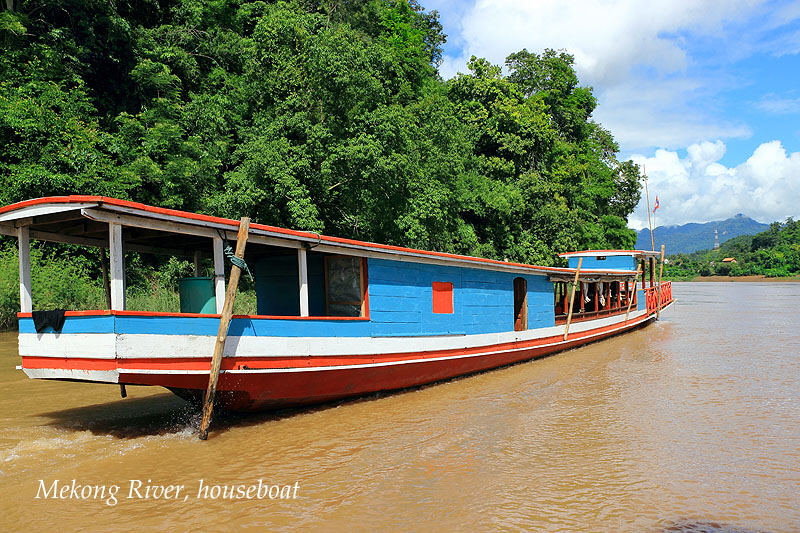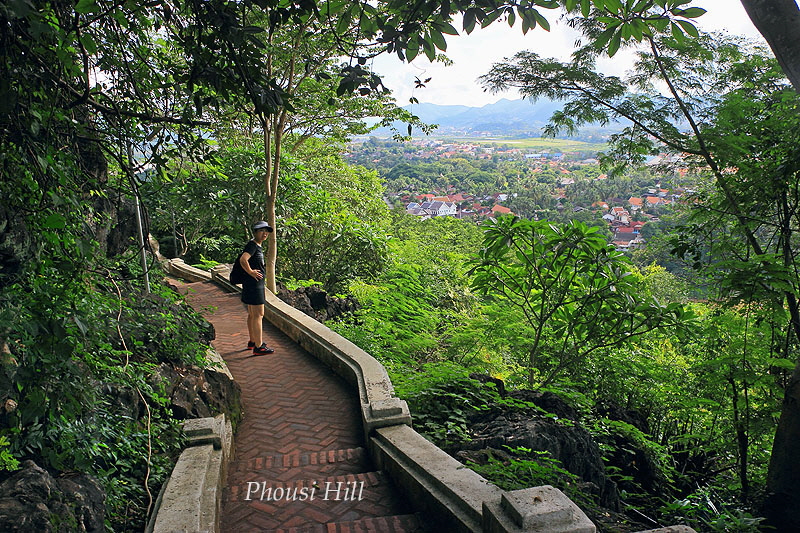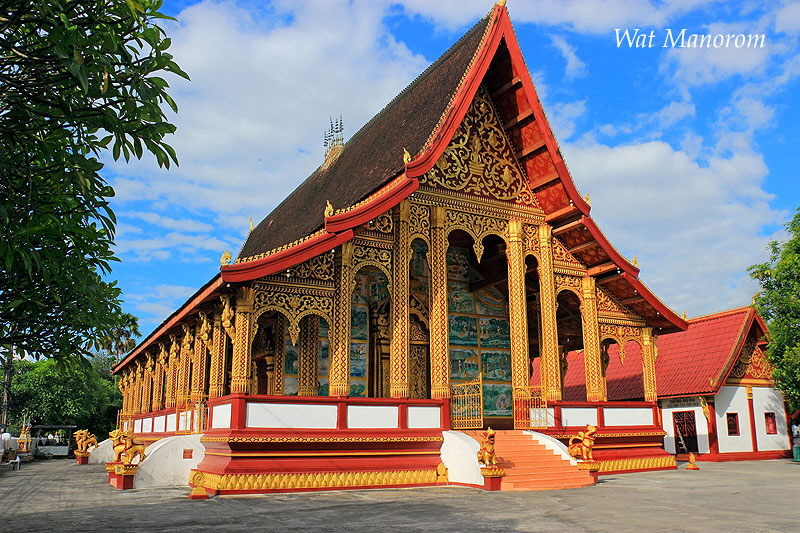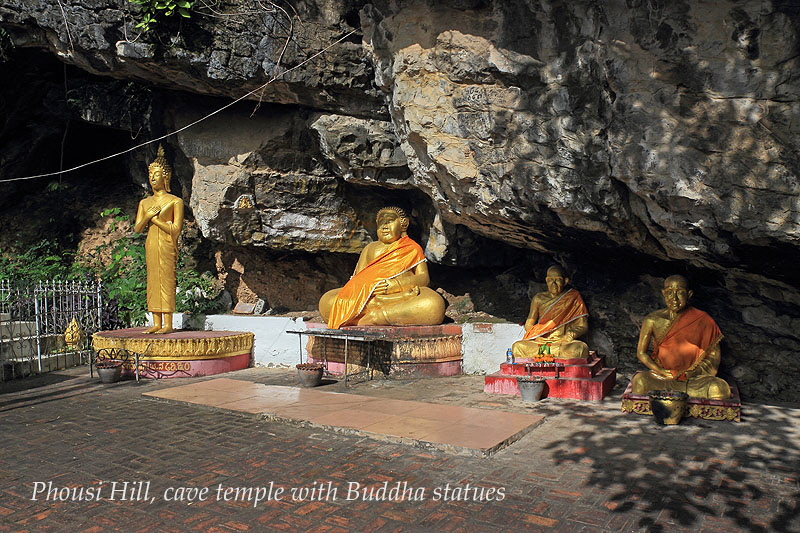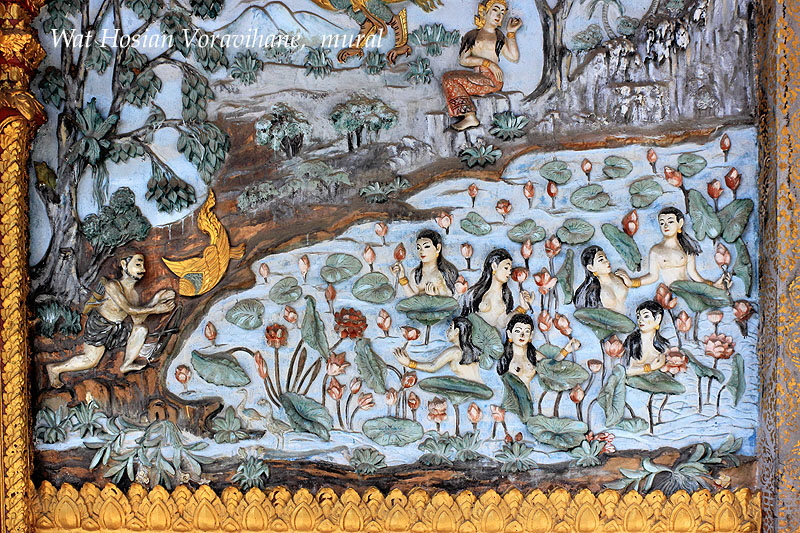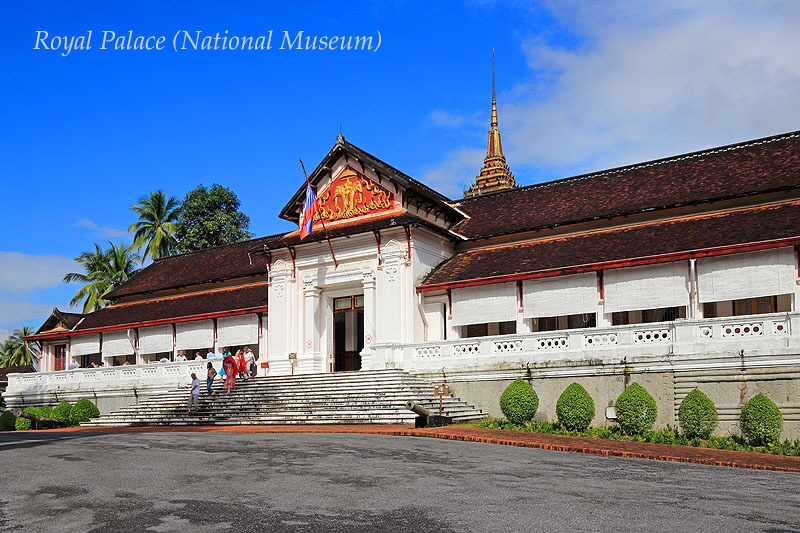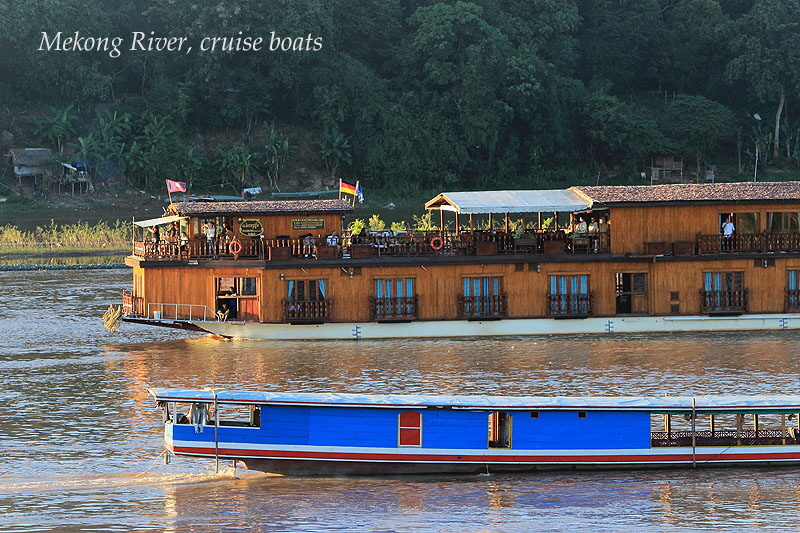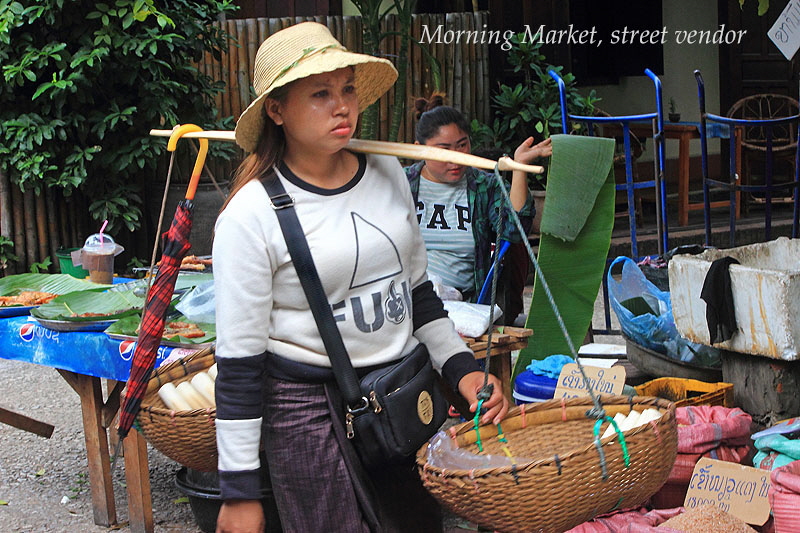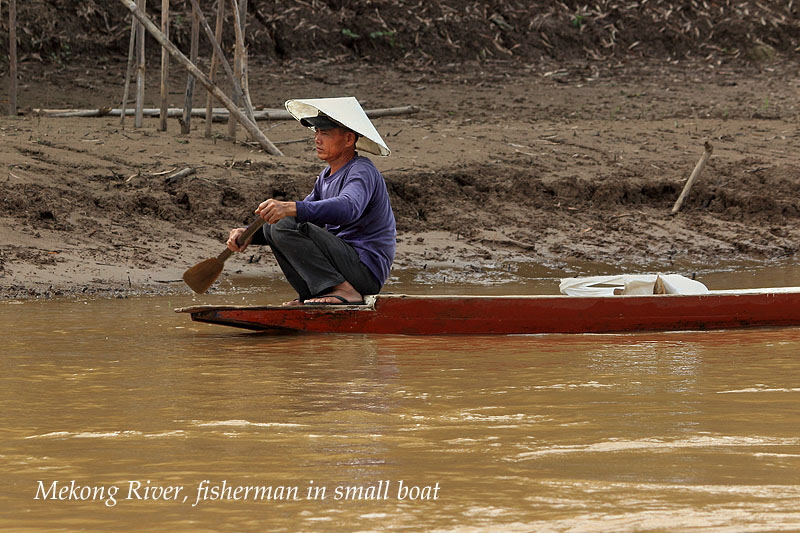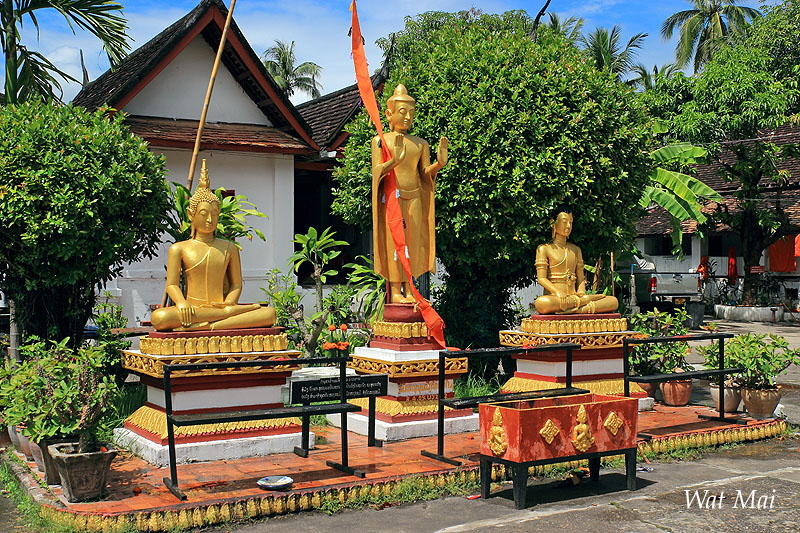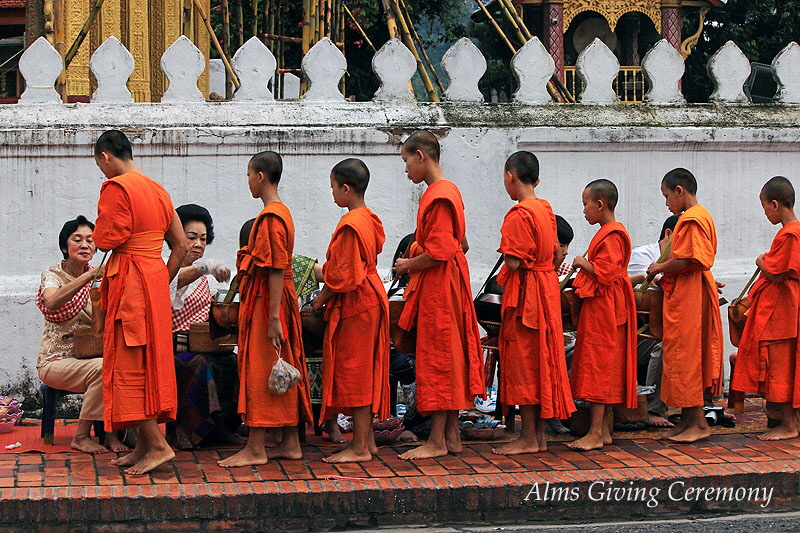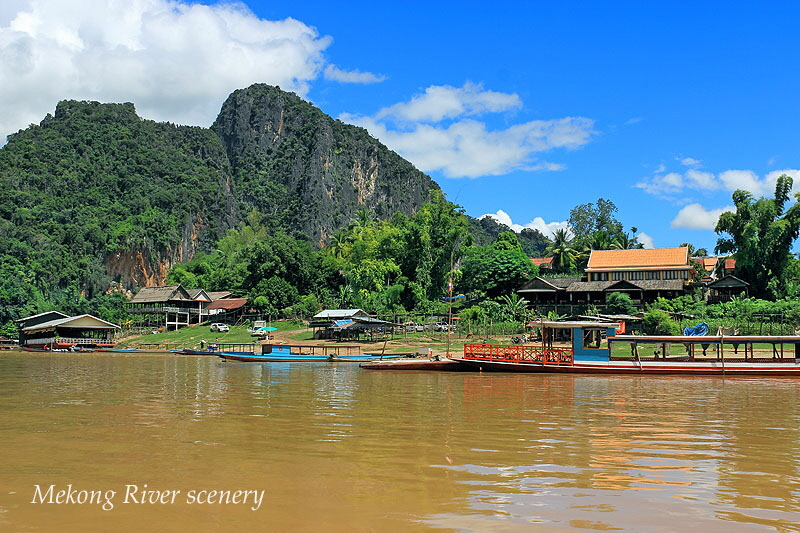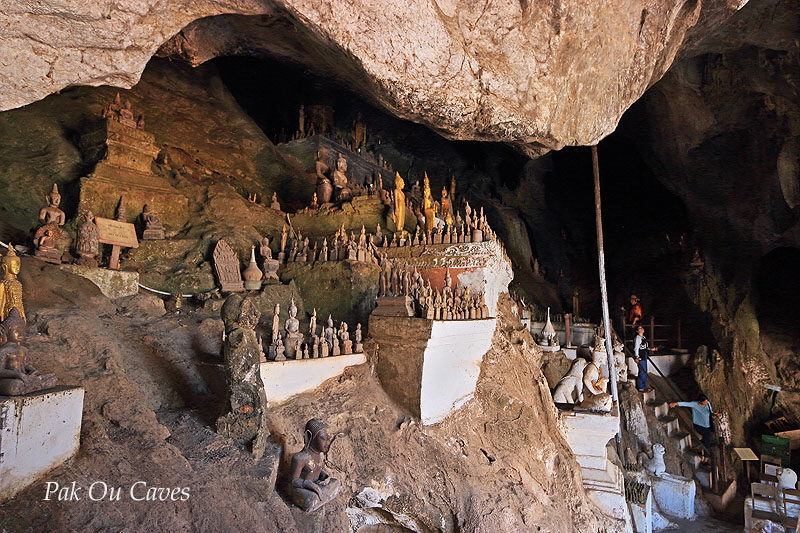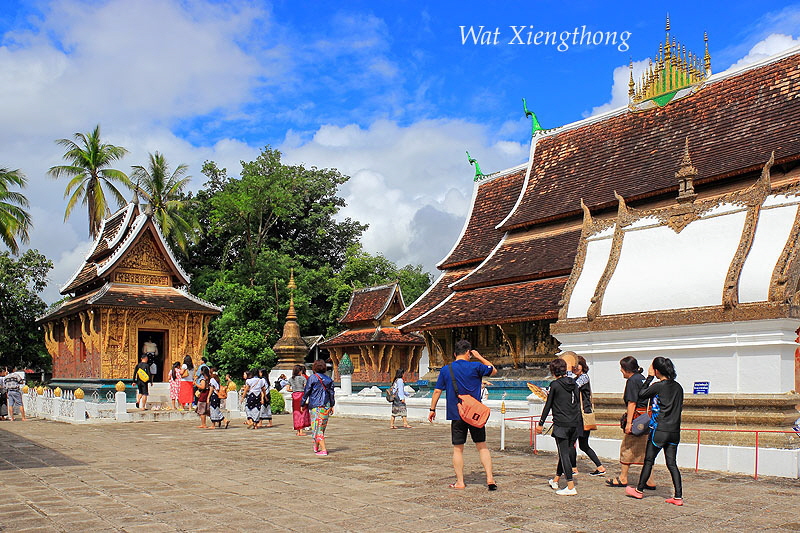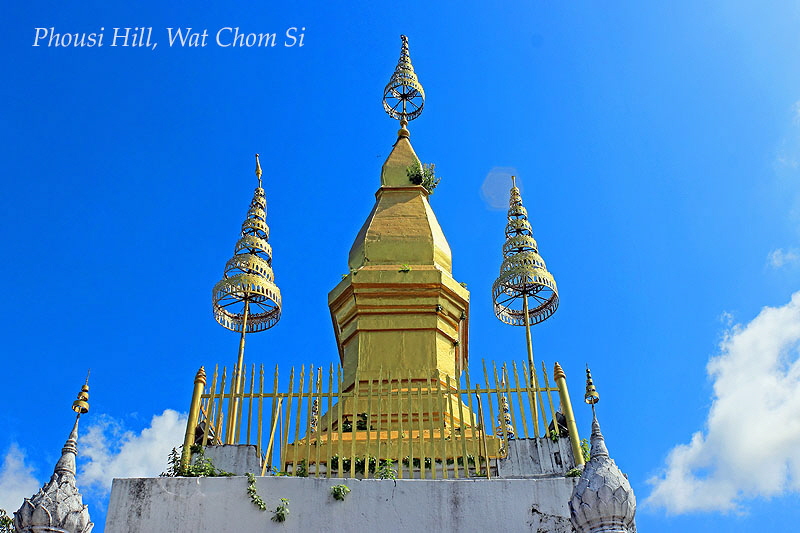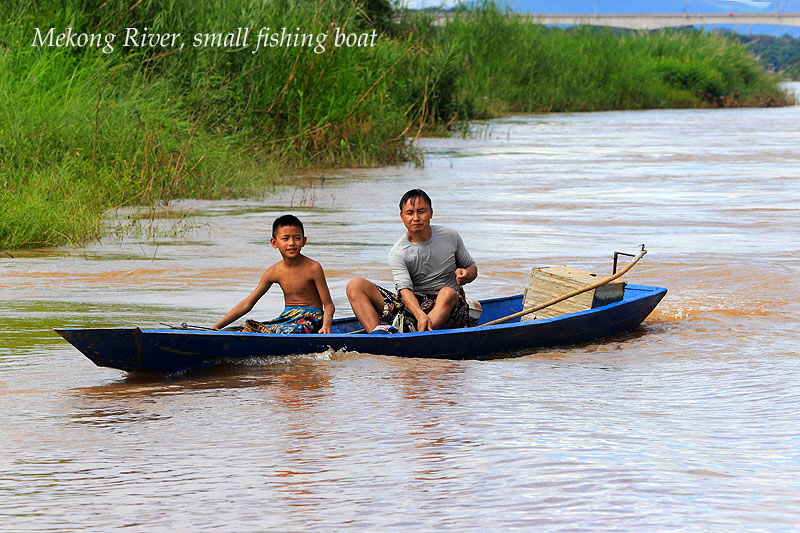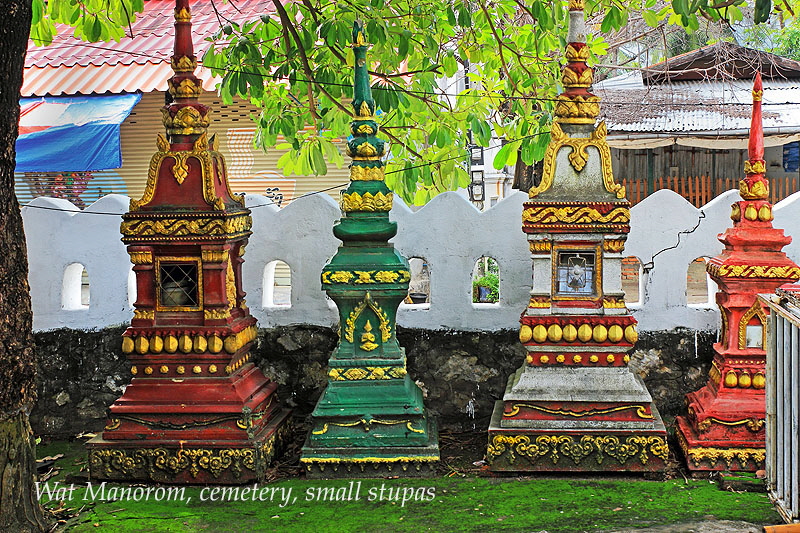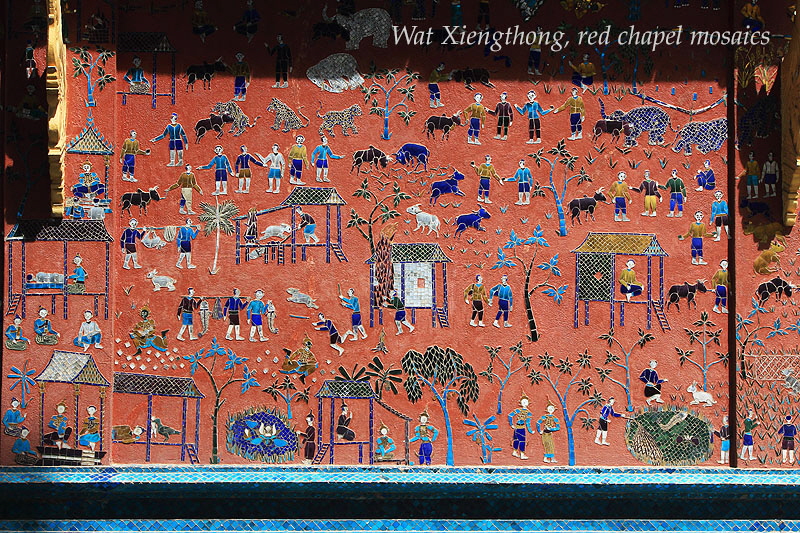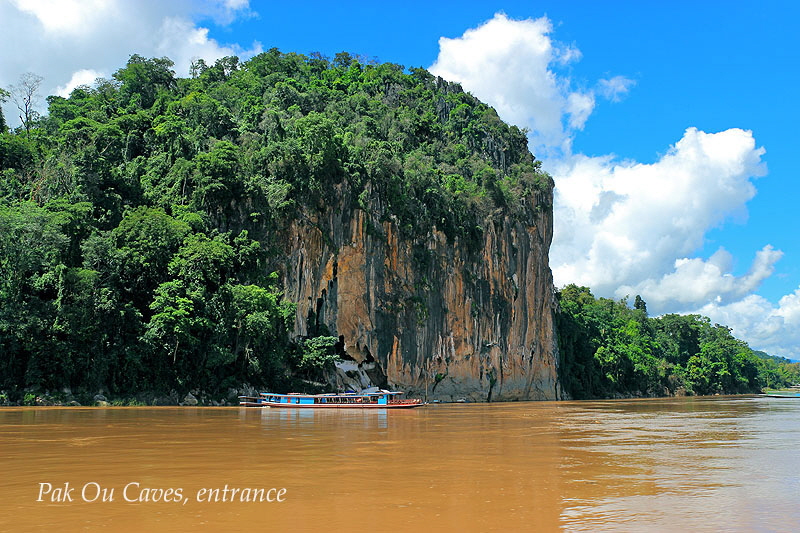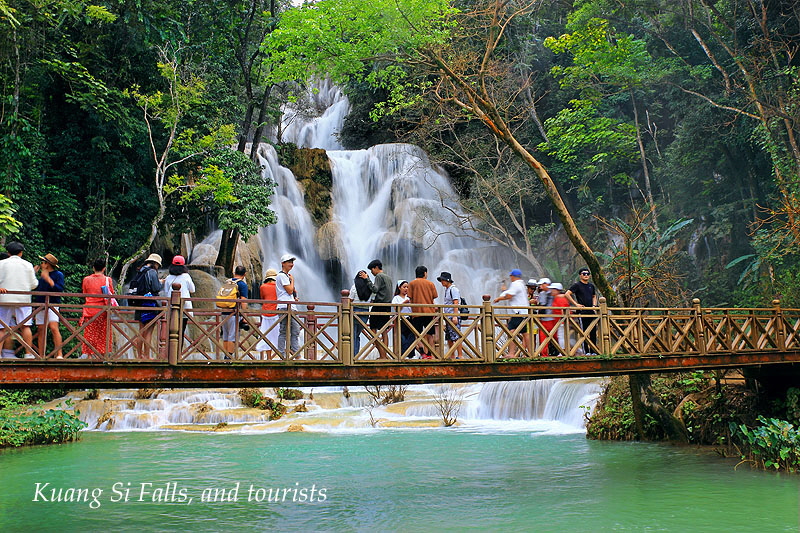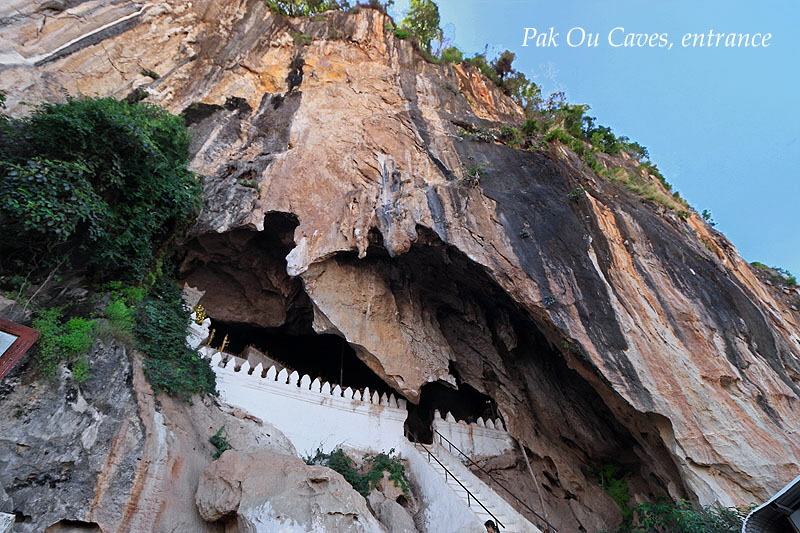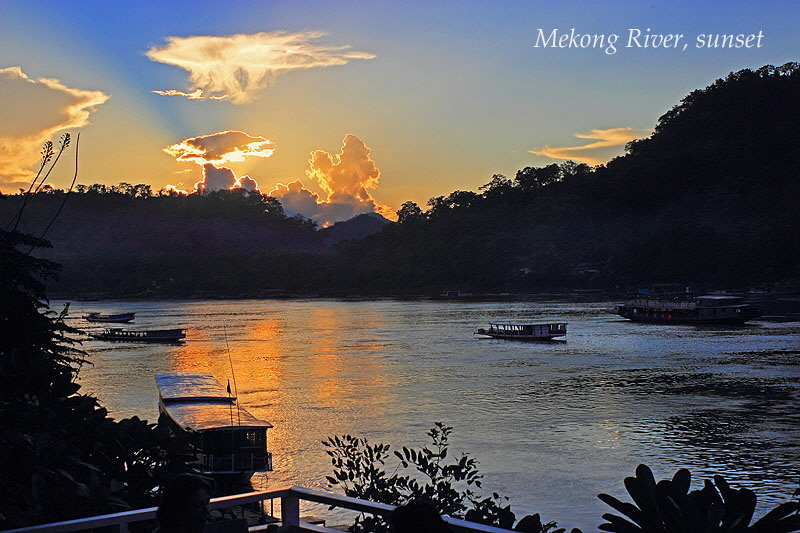Laos is one of the few Asian countries where you can still enjoy the blend of ancient culture and sightseeing in serene surroundings and be welcomed by incredibly hospitable people.
What’s there to like about Laos?
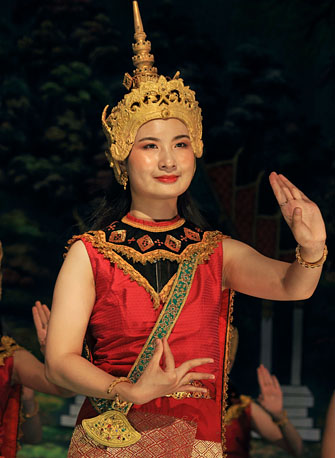
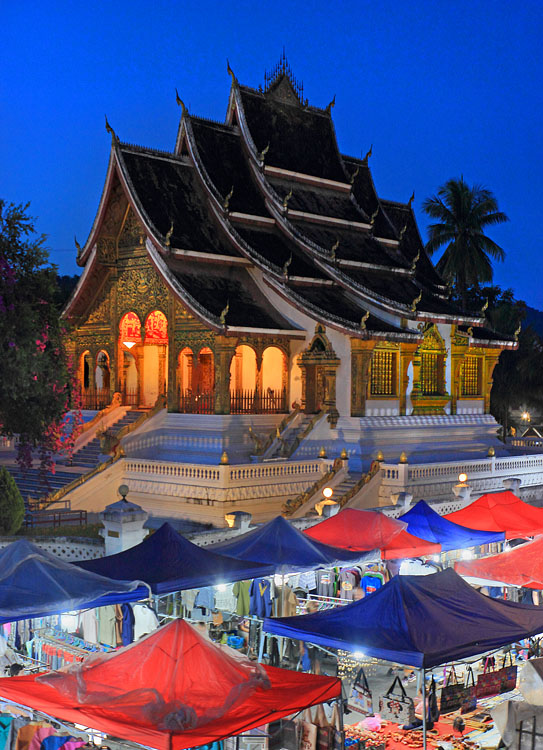
Luang Prabang
an embodiment of culture and Buddhism
The country suffered a great deal in the past with invasions and occupations from surrounding countries and then the French occupation. Between 1964 and 1973, amid a civil war, Laos was nearly destroyed in ‘The Secret War’ carried out by the USA, when more than two million bombs were dropped on this small Southeast Asian nation. It is the most heavily bombed country in the world. However, the recovery between the past and present is amazing, re-emerging as a beautiful land where Buddhism and nature prevail.
Mekong River
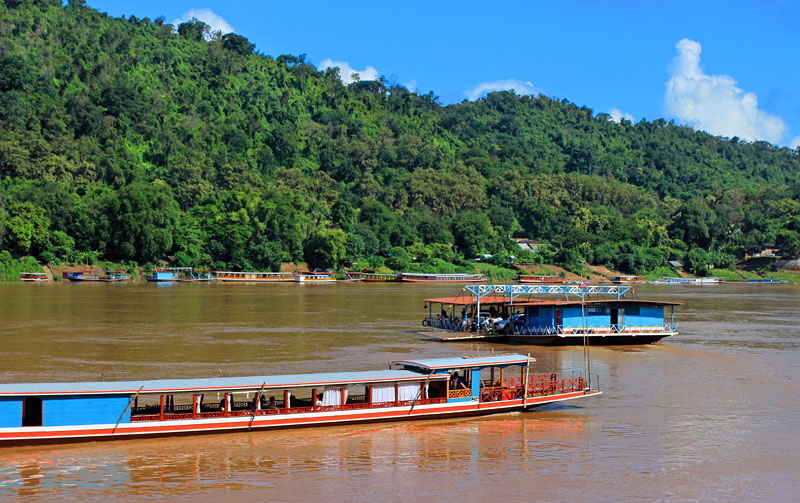
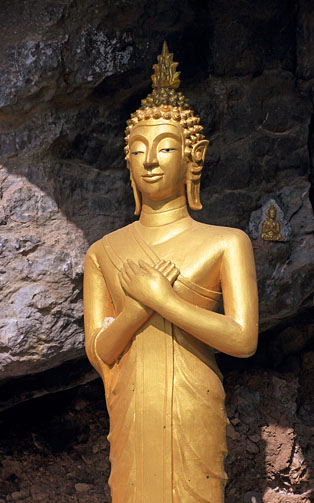
My journey was to Luang Prabang, the small pretty city in the north of Laos, and is a UNESCO World Heritage Site. Marginally unspoilt, but soon could become a victim of overtourism, and partly due to irresponsible behaviour of some tourists, especially at religious sites and events. Yet, it was for me one of the most uplifting and satisfying travel experiences. This article highlights mainly the temples I visited.
Mini Rice Pancakes
Snacks vendor
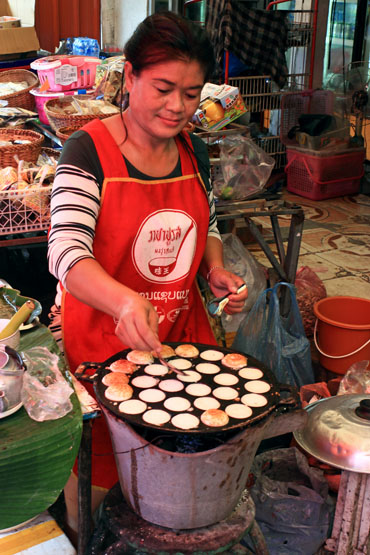
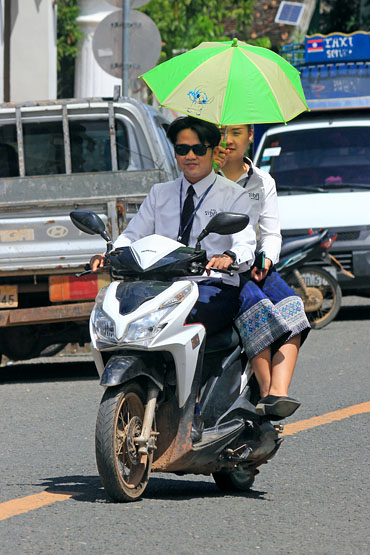
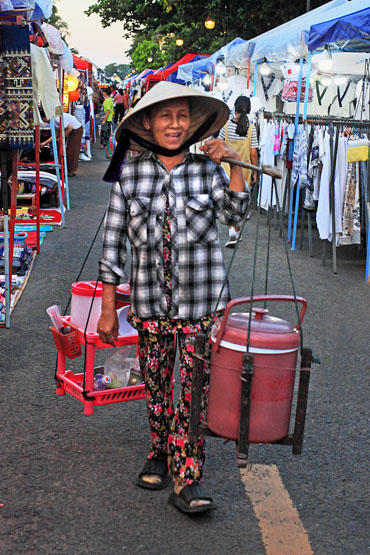
“Hullo, good morning, can you speak English to me” the young novice monk enquired approaching me. Joined by another youngster, both of whom looked no more than 15 years of age, gave me a broad welcoming smile. Of course, I was more than happy to converse. Moving to sit under a huge tree at a temple site, the young monks explained that they were trying to improve their English by chatting with tourists. They were put by their parents to live at the temple and attend its school. One of the novices was not altogether happy with his life saying how much work he had to do in domestic chores, and seeing to the needs of grown-up monks. Nevertheless, it was a pleasant time spent with them, after which an elderly monk walked with me showing me the sights of the temple compound.

I later learnt that many temples have primary schools which help poorer parents send their children to be housed, fed and get a free education. The children can also opt to train to be monks once adults. A regular school curriculum is followed with additional Buddhist teachings.
___________________________________________________________________________________________________________________________________________
Please, please, please ...show some respect
The quintessential image of Luang Prabang is the daily almsgiving ceremony at dawn. Monks from several temples gather and parade along the streets to receive food from Laotians, as well as visitors who genuinely wish to take part. It is a gratifying spiritual experience. Sadly its popularity has also turned it into an uncontrolled and frenetic tourist attraction.
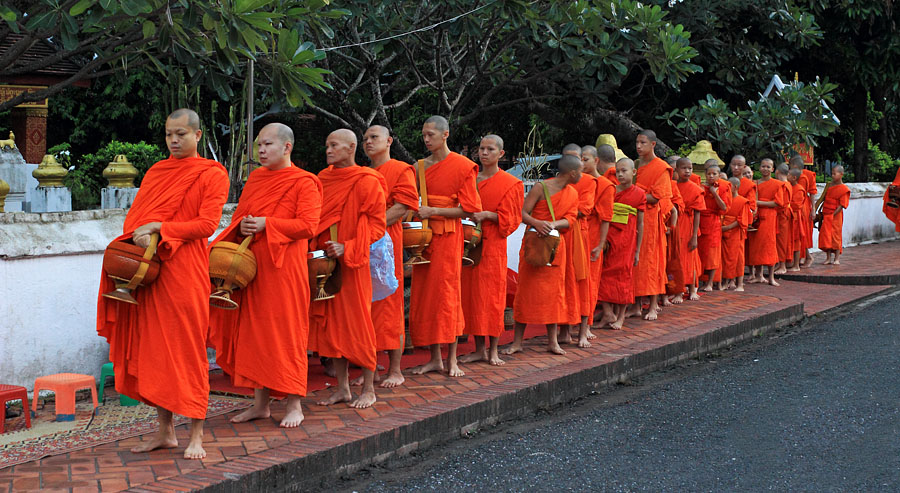
I had heard about it before, and was appalled to see the deplorable behaviour of some tourists during the ceremony. What is a culturally enlightening ritual that has been practised for centuries, is being destroyed by many onlookers, forcing their way in front of the monks for photos. I’ve seen some use flash on their cameras, and women in very short pants walk side by side with the monks, trying to snap pictures of themselves with the priests.
There are numerous signs along the roads and hotels, explaining and requesting the visitor to adhere to simple and easy-to-follow ‘rules’ on how to observe the ceremony with respect to the monks. Yet some tourists are oblivious to any sense of behaviour. How awful it must be for the monks to be treated in such a dehumanising manner. Yet they humbly continue their daily routine in tolerance. It is so easy to observe the ceremony just by standing across the road, without intruding. Unfortunately, some travel operators offer ‘almsgiving tours’ with tourists placed along the path of the monks, only to disturb the quiet procession by taking photos and not even bothering to participate in the ritual. Sadly, the local authorities also tolerate it, as this event alone brings in tourism dollars.
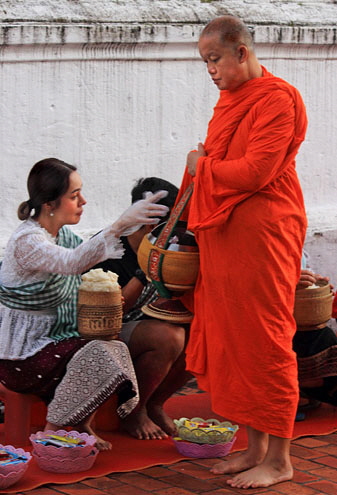
___________________________________________________________________________________________________________________________________________
The old town area is the best place to stay
Old town, Sisavang Vong Road
French colonial architecture
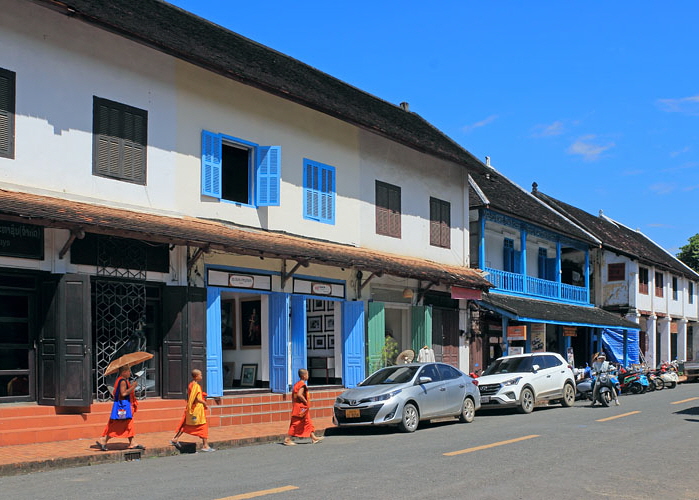
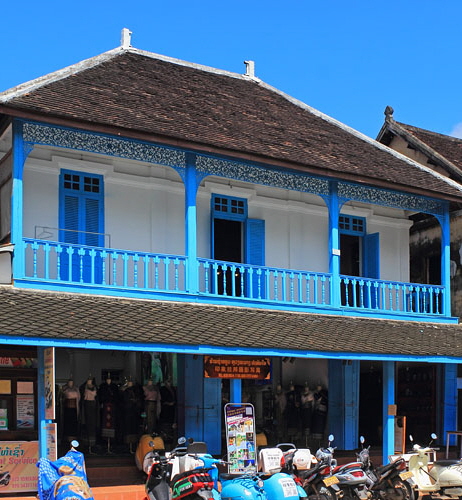
One great advantage of staying in any part of the old town of Luang Prabang is its proximity to nearly all the sights and attractions. It’s a compact city and topographically a peninsula, with the Nam Khan and Mekong rivers on either side. One main road, two minor parallel roads and smaller cross streets make up the entire town, and are very walkable. And if the heat gets too oppressive, there are plenty of cafes especially along Sisavang Vong Road to take a respite and cool off with some chilled coconut water.
Breakfast, by Nam Khan Riverside
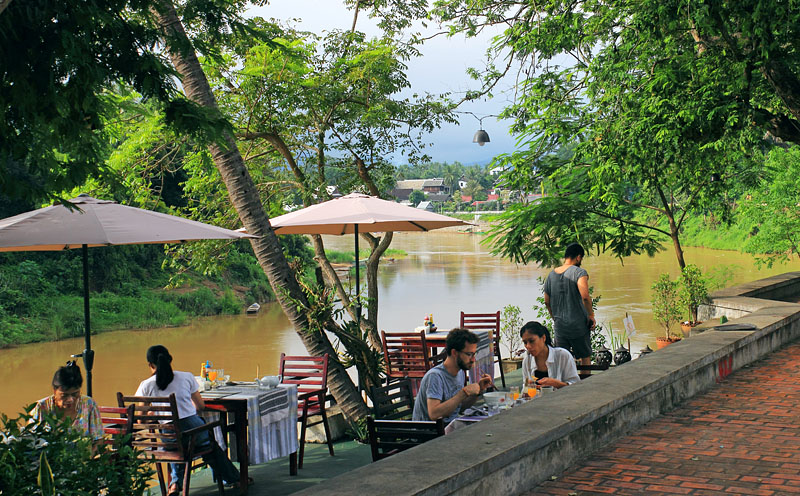
A mistake many make in my view, is that they stay for two or three days and move on. It is possible to see a few temples, do a day trip and get a flavour of the place. Yet this town I found out was not a place to be rushed. And I did spend two lovely weeks discovering why. Not only is there much to see, it is the courteous people and welcome I received wherever I went, that made my visit so memorable. Unlike a big city centre you might visit, here the atmosphere, like in the morning market, night market, food stalls and restaurants is one of quiet repose. The only decibel level raised is by a few tourists who are intoxicated by alcohol tends to disturb the peace.
Dining vy the Mekong Riverside
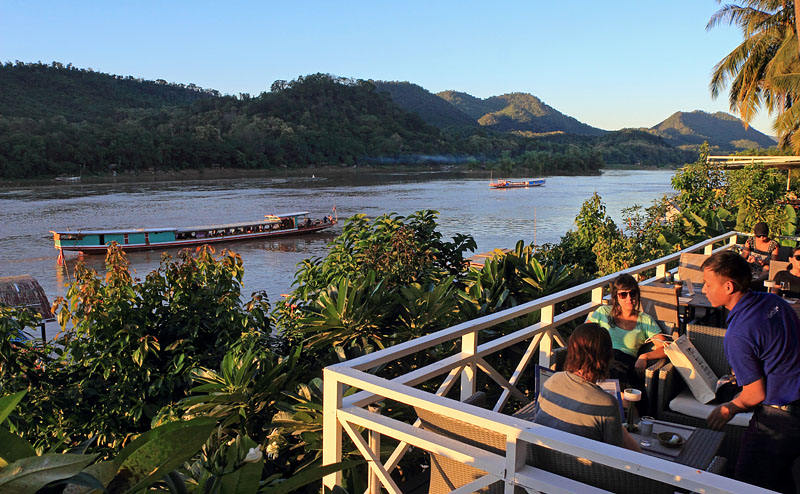
Gorgeous temples - my reason for being here
I have always enjoyed visiting temples in Asia and the Far East.
The older and more historic they are, the better. Art, architecture and archaeology combined make it blissful. They are also calm places to stop, relax and reflect. And I try to be a respectful observer in the presence of monks and worshippers.
Another advantage of staying in any part of the old town is also the accessibility to many of the temples in the vicinity. In some parts, barely a hundred yards separate one site from another. Many date back several centuries, and all echoing Lao, Thai and Khmer architecture.
The Sim (main hall of worship) interiors may look similar in all the temples, with one main Buddha figure, surrounded by other small figures is different postures. However, many can be differentiated by their beautiful murals, and whitewashed stupas that are scattered around the temple premises. Then there are the elaborate and intricate gilded reliefs on spires, doorways and windows, guardian Naga (serpent) and lion sculptures, and Thai-style demon guardian statues at entrances. Despite a few popular temples that can get crowded around mid-morning, most are tranquil places that invite you to explore.
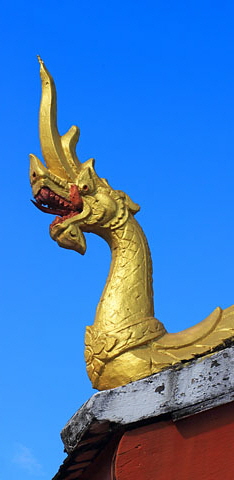
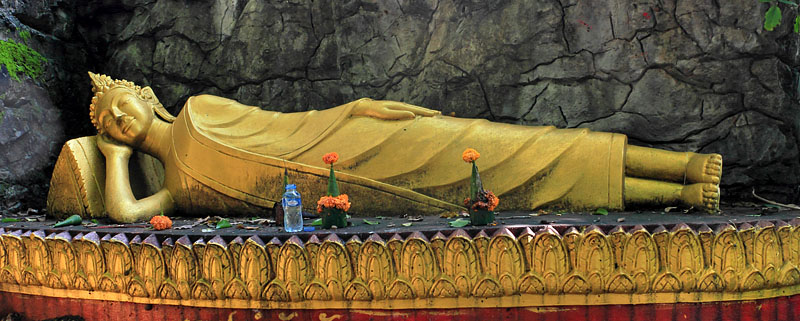
A glutton for culture
There are over 30 temples in the old town area and outskirts alone. Each has its notable history. Most are free to enter, and others charge a small fee. Being a glutton for culture, I visited 24 of them. Here I mention my favourite 10 and encourage you to visit all if you can.
Haw Pha Bang temple
Situated on the National Museum grounds, it’s one of the most popular visited sites in the city. It’s a new structure, completed in 2006 and is built in typical Lao style. Inside enshrined in an altar, features the country’s most sacred Buddha image (photography is not permitted). It is just 83 cm tall, and legend has it that it was made in Sri Lanka a millennium ago. The building exterior is extensively ornate with gilded decorations. The elaborate relief sculptures in the green and gold entrance door and the stairways with mythological Naga serpent sculptures add to the beauty of the building.
Haw Pha Bang temple
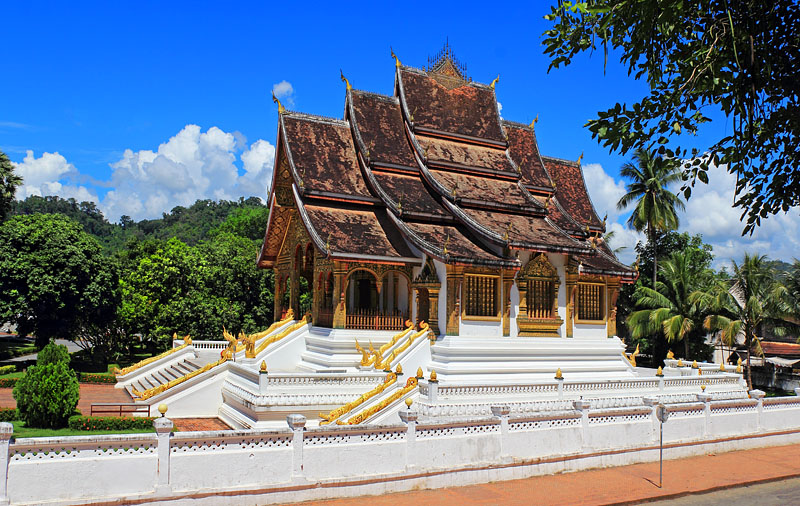
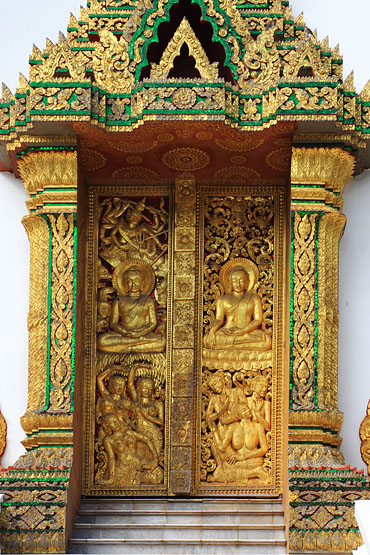
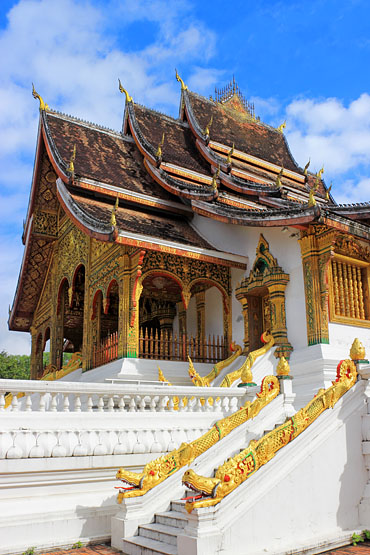
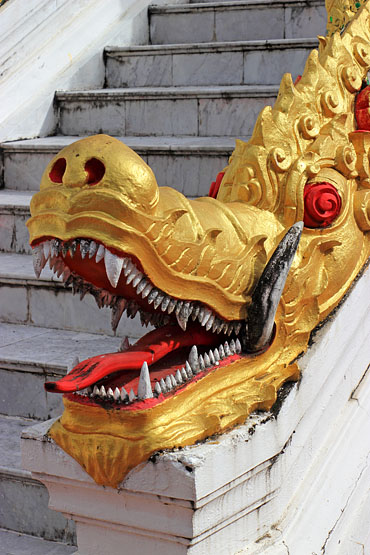
Haw Pha Bang temple, grand entrance door
Haw Pha Bang temple, Naga sculptures on stairs
Wat Xieng Thong
This is probably the most visited temple site in the city. Located in the northern tip of the peninsula, this ancient monastery dates back to 1560 AD and was built by King Setthathisrath (one of the greatest in Lao history). It is a complex of several beautiful buildings, the sim being the main hall of worship. It’s a stunning work of art, with three and two-tiered roofs, and on top, the gilded ‘dok so fa’ ornamental component. On the rear of the sim, is a huge colourful ‘tree of life’ mosaic.
Other splendid buildings include the Red Chapel with mosaic-covered walls all around. Inside the royal ‘Carriage House’ is the huge funerary carriage of King Sisavang Vong. It’s an intricately designed wooden and golden structure, with Naga serpents in front. The building itself is a work of art with the whole exterior facade covered in intricate gilded work. Several other small stupas are scattered around the site and are best visited early morning before the crowds arrive.
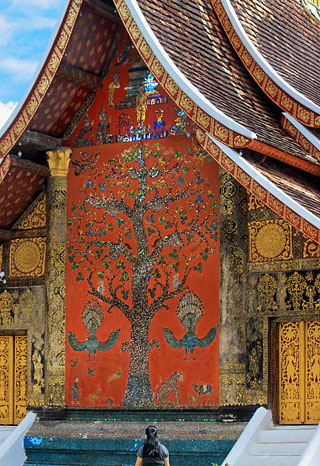
Wat Xieng Thong, sim
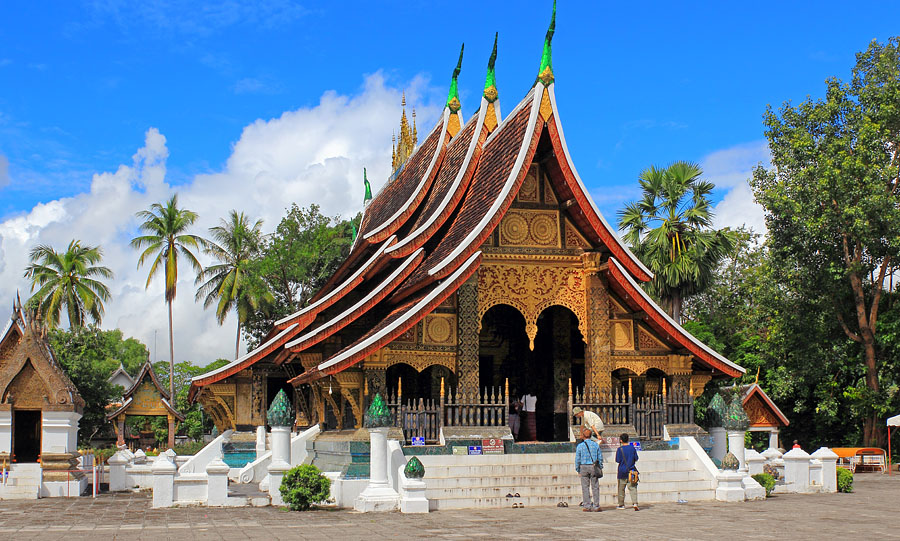
Wat Xieng Thong,Red Chapel
Wat Xieng Thong, Carriage House
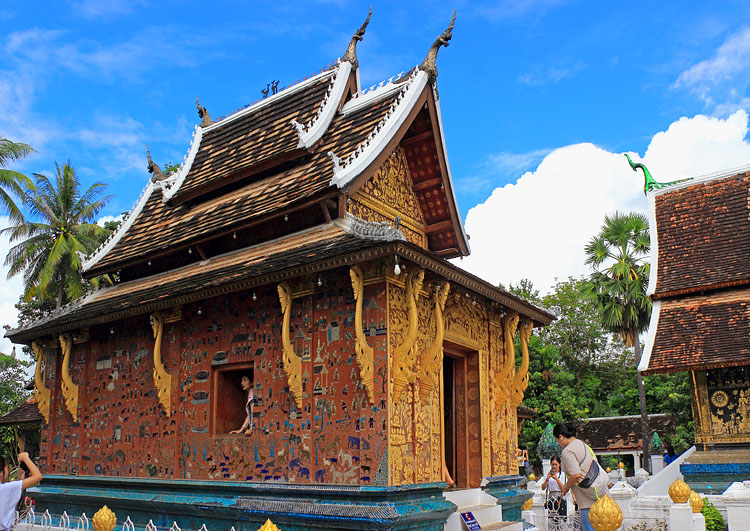
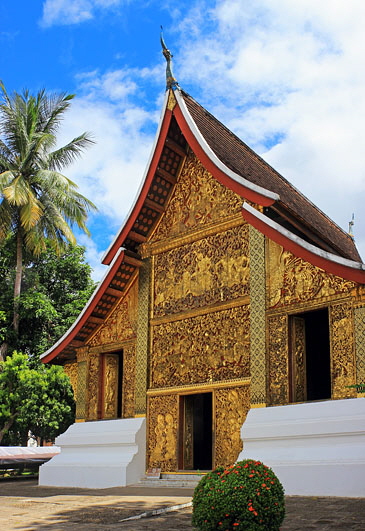
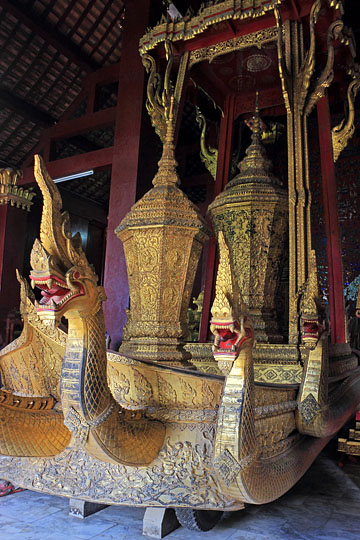
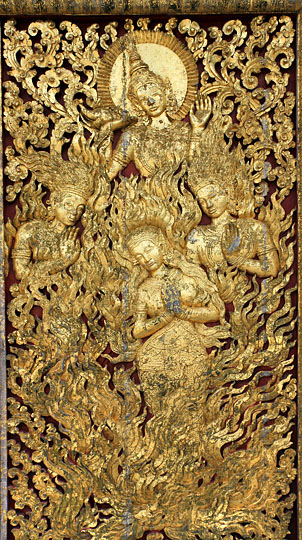

Wat Xieng Thong, Carriage House, funerary carriage
Carriage House, gilded work
Wat Xieng Thong, the sim, gilded Dok So Fa
Wat Mai Suwannaphumaham
Next door to the National Museum, and along the main street of Sisavang Vong, this is one of the largest temples. It is also one of the most photographed. The sim has a five-tiered roof, with a golden Dok So Fa on top of the fifth. The decorative Doric columns support the veranda all around, and the richly gilded stucco carvings along the whole of one facade are truly masterpieces. They depict Buddhist stories, wats and town scenes, flora and fauna. The chiselled and gilded wooden doors have beautiful images of deities. Inside the sim is a large Buddha statue, surrounded by smaller figures. In the compound, there are several Buddha figures, a chapel, drum tower and stupa. From the courtyard, you also get an excellent view towards Phousi and the temple at the top.
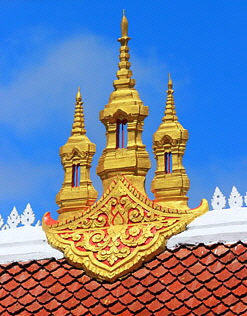
Wat Mai, the sim, five tiered roof
Wat Mai, the sim Dok So Fa
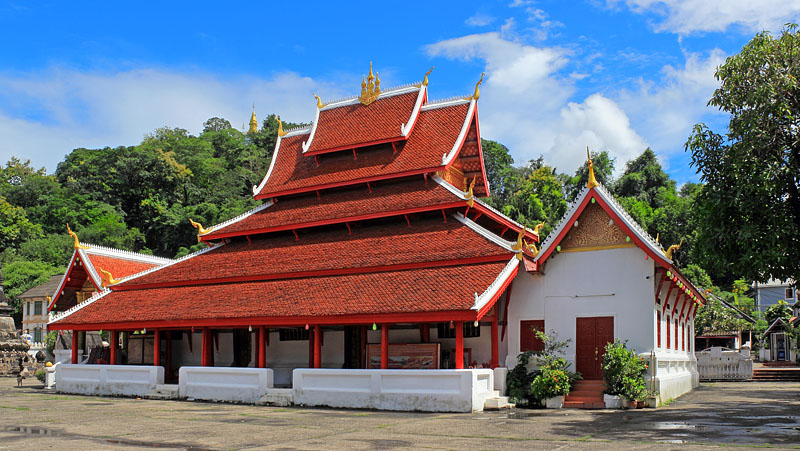
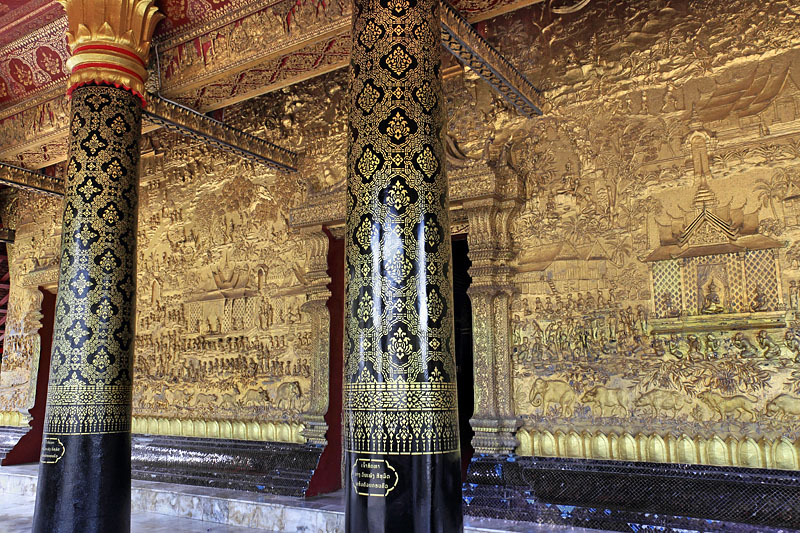
Wat Mai, gilded stucco carvings
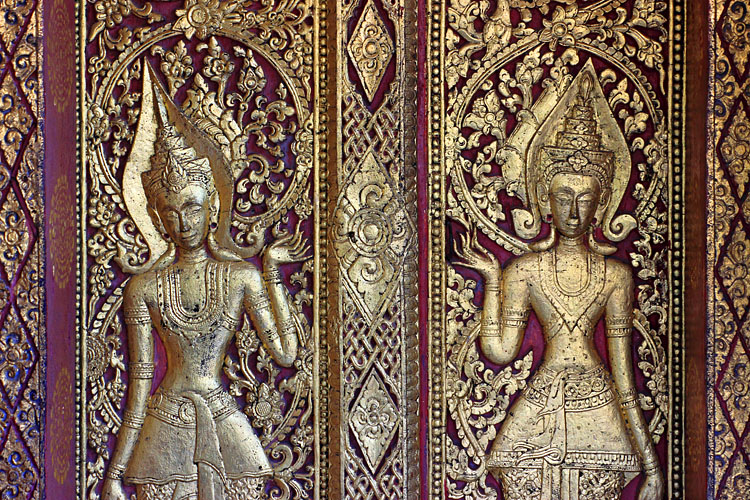
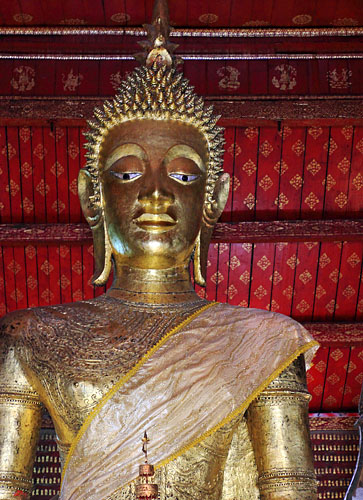
Wat Mai, gilded deities on wooden doors
Large Buddha statue in the sim
Wat Pa Phon Phao
Meaning ‘temple of peacefulness’, it’s perched on a hilltop about 3 km from the centre. It’s unique in both interior decorations and the octagonal architecture. The one-building edifice has five floors and was built in the 1950s. In the interior is a large collection of murals. While some paintings depict Buddhist stories and mythology, others are gruesome, illustrating punishment in hell for those who have committed bad karma. From the balconies of the temple are uninterrupted views across the city and beyond. The gardens and forest areas surrounding the temple invite you to meander and perhaps quietly contemplate. I was the only visitor there and enjoyed my time in a peaceful environment.
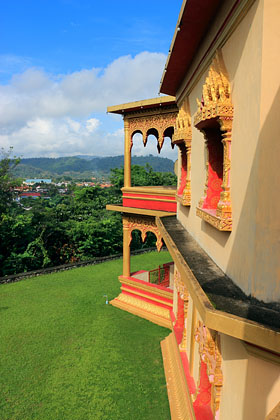
Wat Pa Phon Phao, octagonal sim
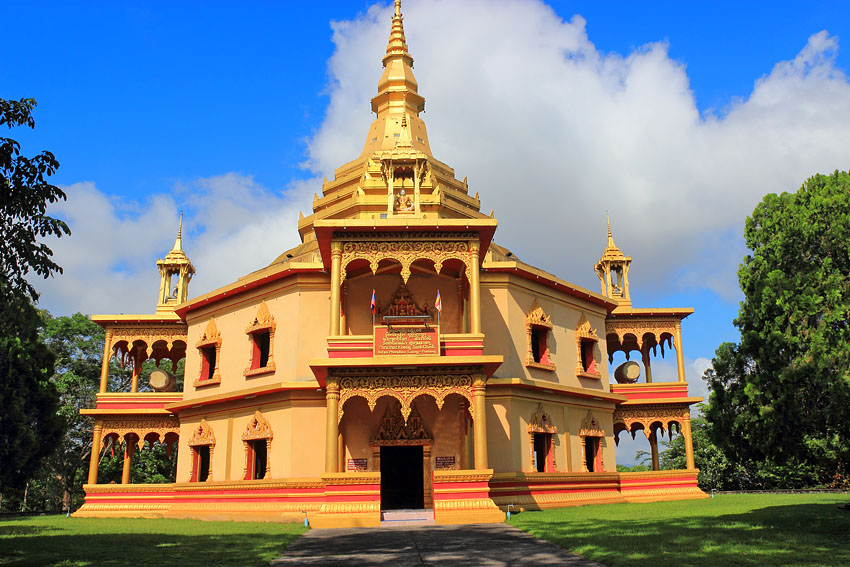
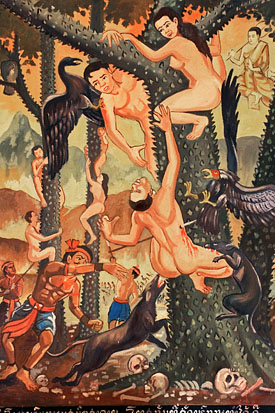
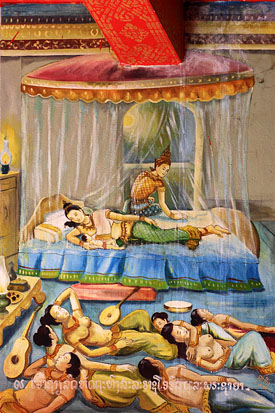
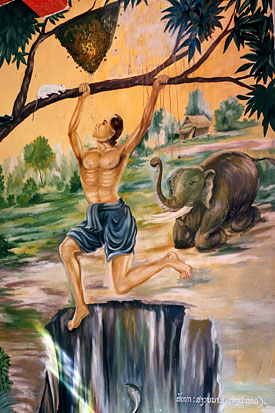
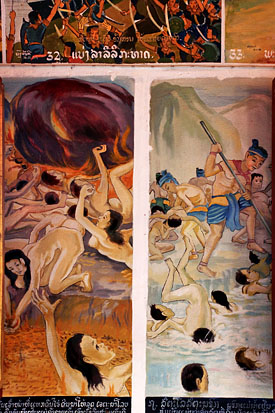
Wat Pa Phon Phao, murals, some which are gruesome
Wat That Luang Rasamahavihane
Also known as the ‘Monastery of the Royal Stupa’, you not only get to see the temple buildings but also observe the workings of the temple. Many monks, from novices to adults, walkabout at a relaxed pace, attending to the gardens, while others are engaged in cleaning and whitewashing the walls. I was welcomed by many of them, including youngsters who wanted to chat.
From the entrance gateway with long Naga Guardians casts on either side, pass the gardens and tall trees, you arrive at two grand stupas. One is said to contain the ashes of King Sisivang Vong, and the older stupa, relics of the Buddha. The sim, though not large has some lovely Thai-style lacquer and gilded wooden doors and windows and a large bronze seated Buddha. It was an opportune moment to sit quietly in a corner, listening to the mantra coming from a dozen or so monks.
Take time to enjoy walking amongst the smaller stupas spread around, rows of golden seated Buddhas, the gardens with a huge Bodhi tree and the cemetery with small chedis.

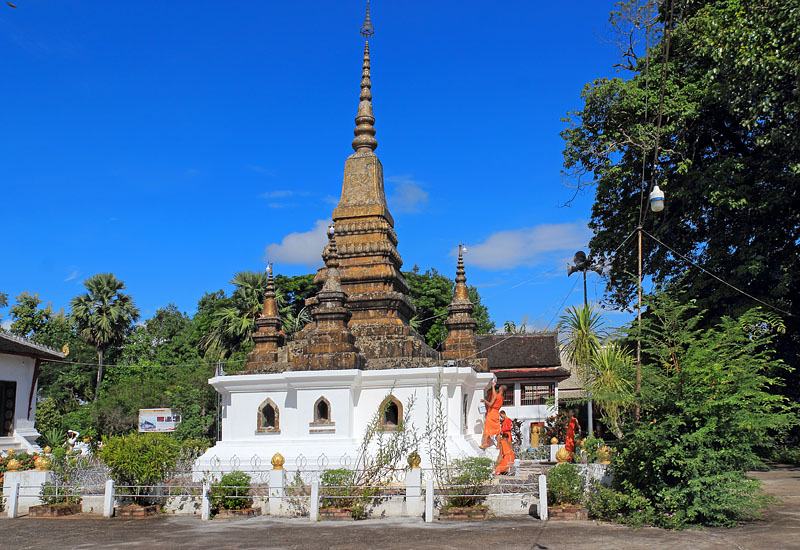
Wat That Lung,stupa
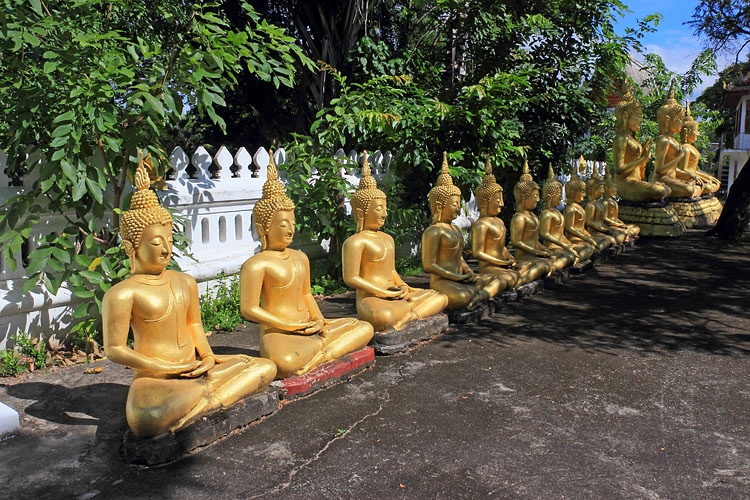
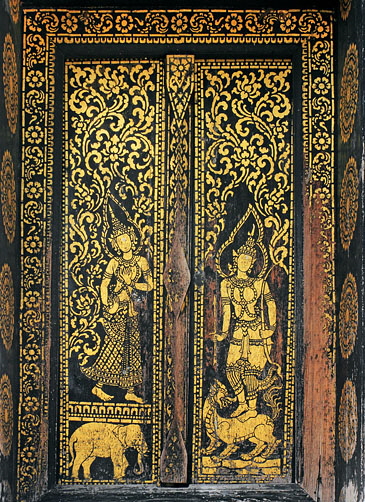
Wat That Luang, lacquer and gilded doors of the sim
Wat Visounnarath
Set on spacious grounds, it is one of the oldest temples - originally built around 1512-15 AD. It is unique due to its enormous and unusual stupa That Makmo, nicknamed ‘watermelon stupa’ due to its likeness to the fruit. The dome reflects Sri Lankan style and is the only stupa of this type in Laos. The temple’s sim is not only a place of worship, it is also a museum of Buddhist art and artefacts, with centuries-old bronze, gilded, and wooden Buddha statues. You’ll also find a Hindu Ganesh statue amongst the exhibits. A huge golden seated Buddha statue takes centre place in the hall.
Wat Visounnarath
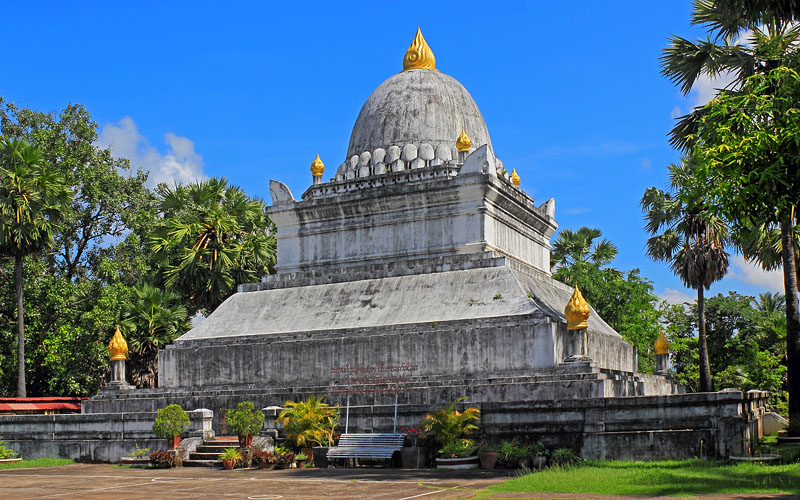
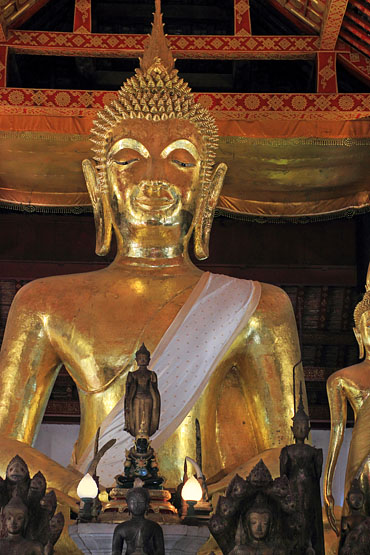
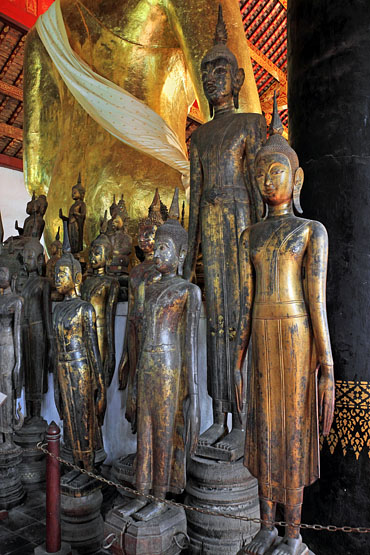
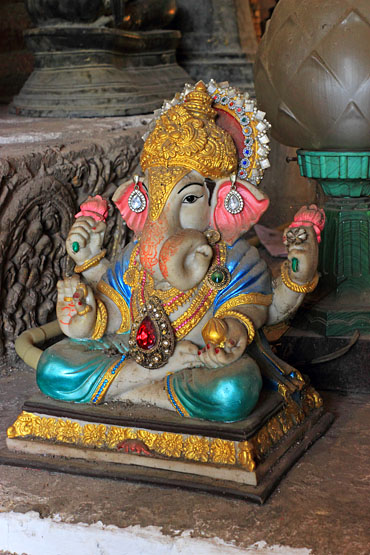
Huge golden Buddha statue in the sim
Wat Visounnarath museum
Ganesh statue
Wat Hosian Voravihane
This temple site appears to have two exceptionally striking sims - referring to Temple 1 and Temple 2. At the back is also a large ancient stupa built during the Lan Xang kingdom period. It is situated in a large compound. The entrance is via a small flight of stairs lined on either side by silver colour Naga figures. This, like Wat That Luang Rasamahavihane is an active temple, with monks and other workers going about their daily duties. The two main buildings are colourful with lovely decorations of golden Naga figures, murals, and gilded reliefs on doors. The site also has a Buddhist teaching school and living quarters for monks.
Wat Hosian Voravihane, Temple 2
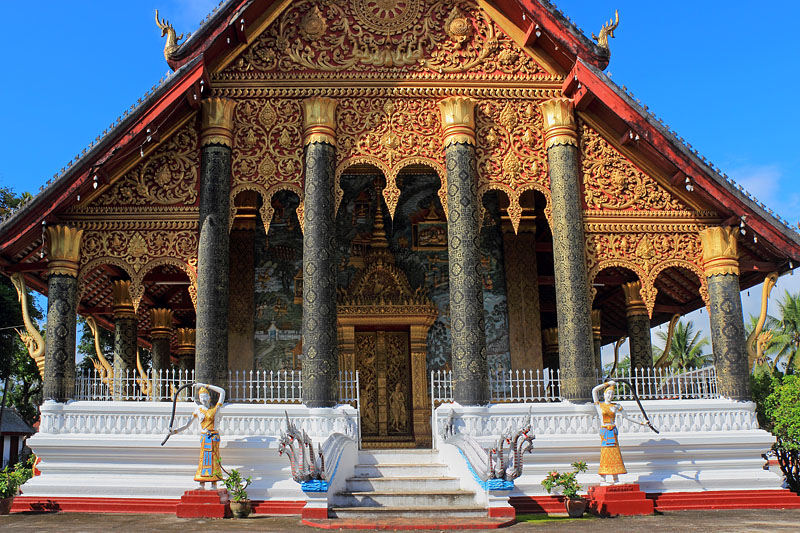
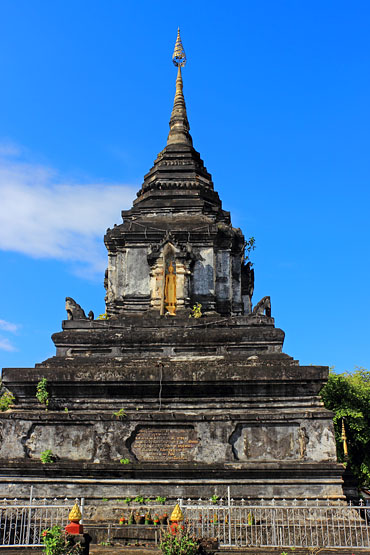
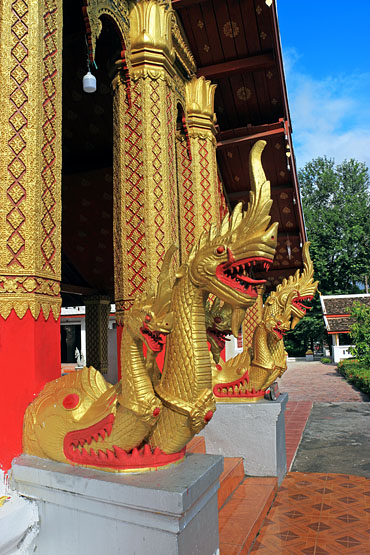
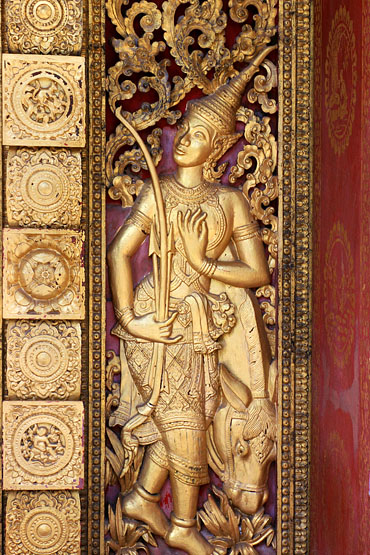
Wat Hosian Voravihane, ancient stupa
Naga sculptures
Wat Hosian Voravihane, gilded relief decorations
Wat Manorom
Although the original monastic site dates back to the 14th century, due to invasions, many of its buildings were destroyed, and rebuilding began in the late 19th century. The magnificent sim (congregation hall) is a recent structure built in 1971. Steps with guardian lions on either side lead onto the veranda and entrances. The gilded main door features scenes from the Buddha’s life. The all-around murals also depict Buddhist stories. Inside, the huge seated Buddha figure is surrounded by smaller statues. This is a large site with several buildings, drum-tower and a primary school for ecclesiastical education. A walk around is very pleasant and relaxing with shady trees to cool off and see other colourful stupas and goddess Phra Mae Thorani statues.
Wat Manorom site
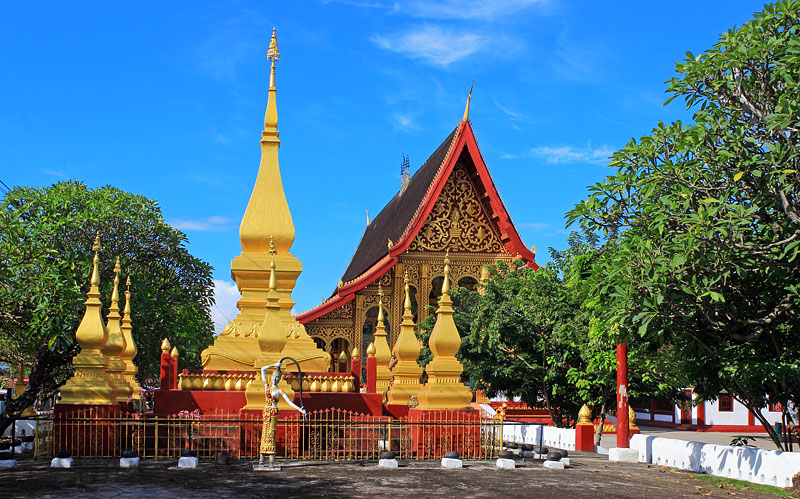
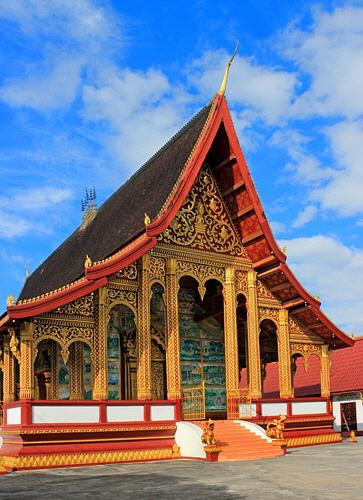
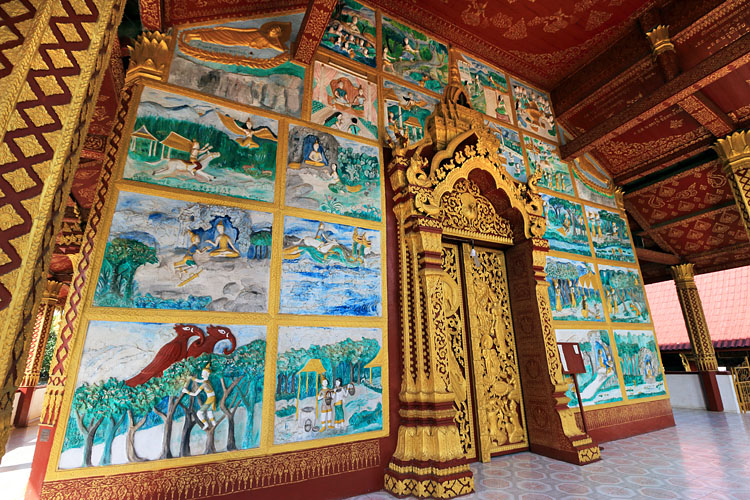
Wat Manorom, the magnificent sim and murals
Mount Phou Si and Wat Chom Si
Right in the heart of the old town, the ‘mountain’ may not seem that high. And once reached the top the golden stupa of Wat Chom Si may not look that impressive. However, it’s the 320 steps along the winding path that make a visit compulsory. It’s a beautiful walk uphill, with tall trees and shrubs and its dark forestry greenery. Along the way, you’ll see many Buddha statues, shrines and mythical creature sculptures. From the summit are spectacular views across the whole town and the Mekong River. Many visitors come in crowds to the site for sunset views. I, however, decided on a quieter morning visit at a slow pace.
320 steps to the top of Mount Phou Si
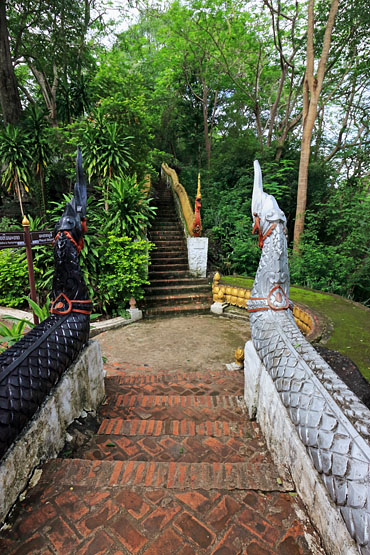
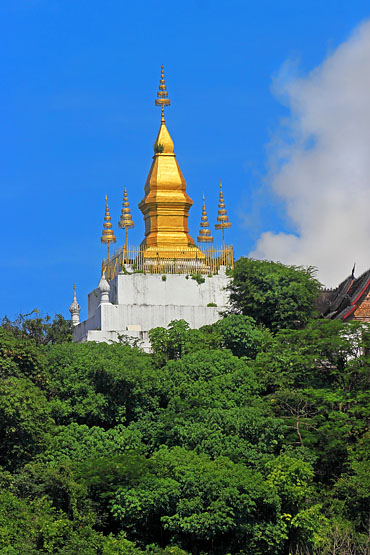
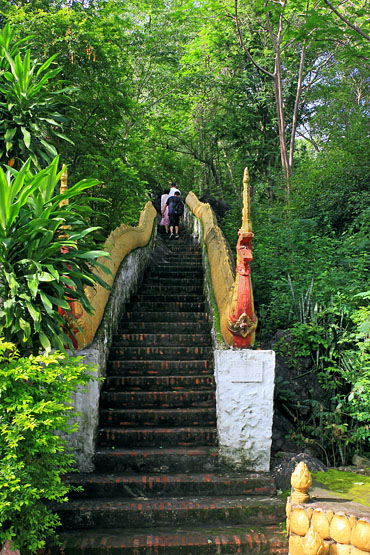
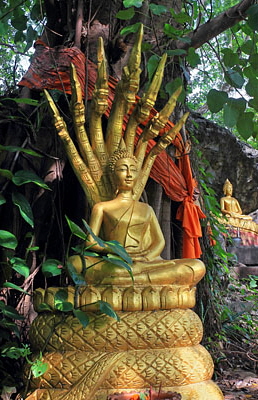
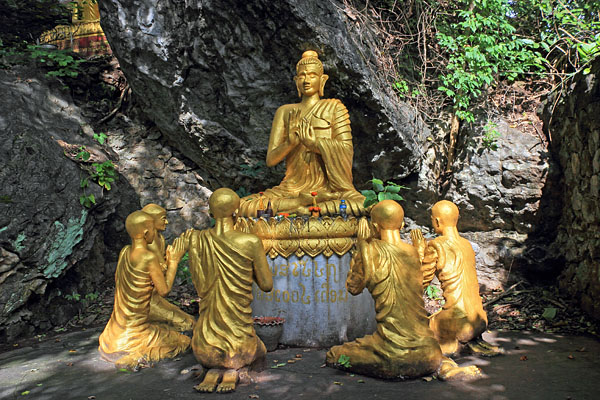
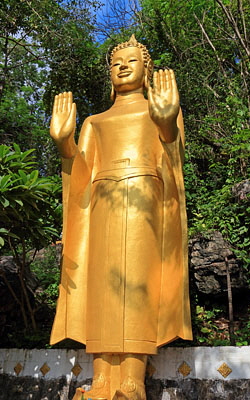
Mekong River, view from Mount Phou Si
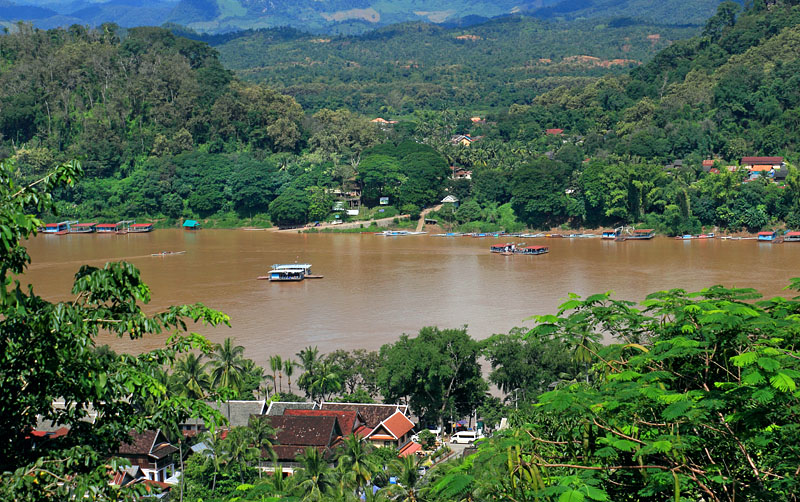
Wat Pa Huak
Located at the entrance to Phousi Hill, and along Sisavang Vong Road, it is a small temple site. The sim is also small, and despite a sign outside inviting visitors to come inside for free, it is often ignored, as they are drawn more to the grand Haw Pha Bang temple on the opposite side of the road. Yet it remains one of my favourite ‘little’ temples. It had been neglected for many years, and when I was visiting, some restoration work had been done. The turquoise blue and gold leaf decorative facade with a three-headed elephant of Hindu mythology looks quite attractive. There is not much to see inside, except for the 19th-century non-religious paintings and an altar with three Buddha statues.
Wat Pa Huak
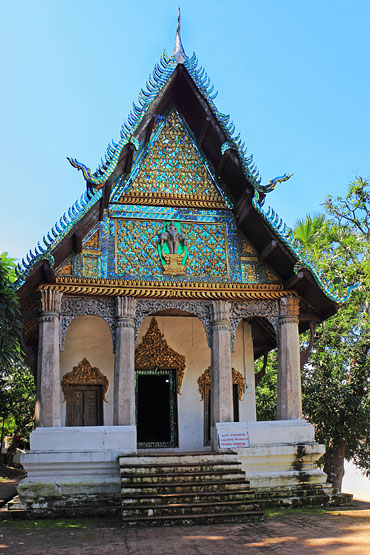

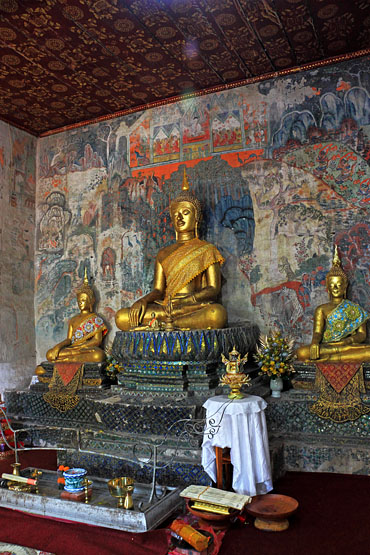
Other temples I visited are:
Wat Aham, Wat Aphay, Wat Choum Khong Sourin Tharame, Wat Khan Khammungkhun, Wat Nong Sikhounmuang, Wat Munna, Wat Pa Phai (aka Wat Paphaimisaiyaram), Wat Paphaimisaiyaram (aka Wat Pa Phais), Wat Phonxay Xayxana Song Kham, Wat Sensoukharam, Wat Sibounheuang, Wat Sop Sickharam, Wat Souvannakhiri and Wat Xieng Mouane. All are easily accessible by foot.
Familiar temple features - and a treat for art enthusiasts
Apart from Buddha statues and shrines, there are two other common features to look out for at most temple sites. One is the ornamental ‘Dok So Fa’ (meaning reaching towards the sky), a decorative centrepiece on top of the roof of the sim (main hall of worship). They usually consist of a line of golden mini spires or pagodas. The number of spires or elements, and its ornate beauty define the importance of the temple. Ten or more elements mean they were built by a king.
Decorative Dok So Fa
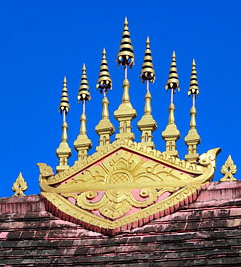
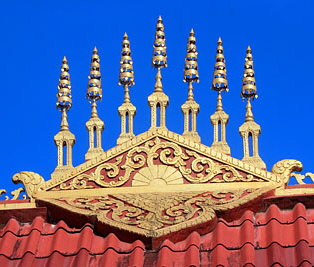
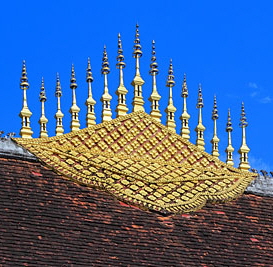
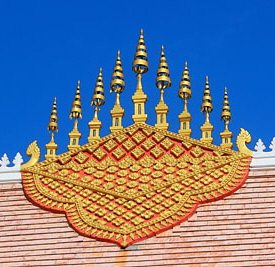
Another are statues of the goddess Phra Mae Thorani - depicted as a beautiful deity. Also revered as the ‘goddess of earth’ or ‘mother’. The statue depicts the woman wringing the water off her long hair to drown Mara, a demon sent to tempt lord Buddha as he meditated under the Bodhi tree.
Phra Mae Thorani statues
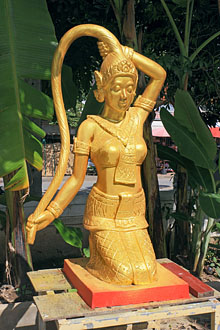

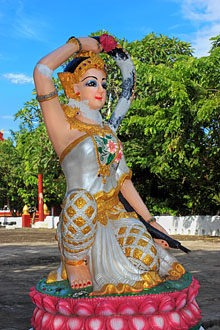
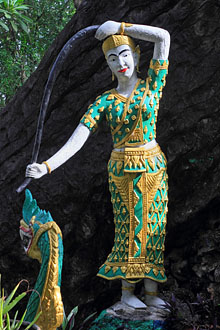

Had my fill of temples...so what else was there?
Royal Ballet Theatre
For an evening of pure cultural entertainment, head for the Royal Ballet Theatre, located on the grounds of the National Museum. The 90-minute on-stage colourful extravaganza is performed by around 50 dancers and actors, along with musicians. The show is an enactment of Phralak Phralam - the Laotian version of the epic Indian story of Ramayana. The graceful movements of the dancers alone are stirring to watch. Pay a little extra to be seated in the front rows for a perfect view.
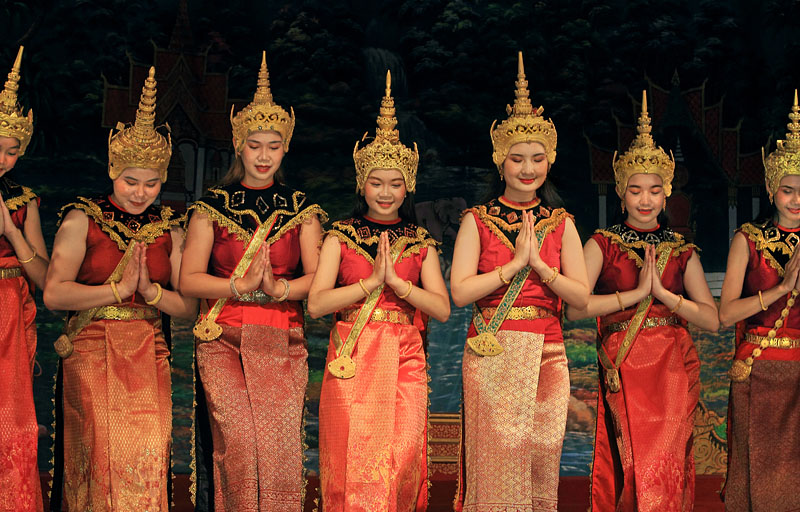
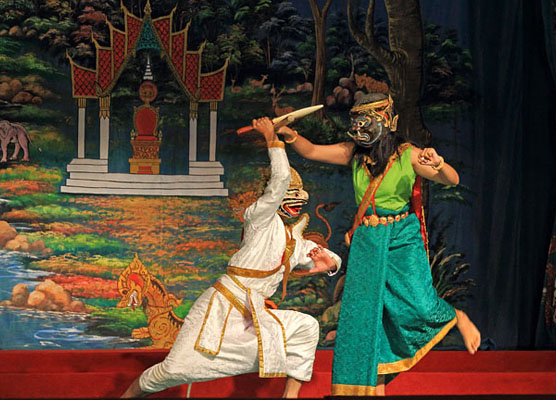

Take in the market scene - night or day
Night Market
One of the loveliest insights into the Laotian lifestyle is to visit the markets. The daily Night Market along Sisavang Vong Road begins around 6 pm. The vendors bring out their goods and take time to lovingly and neatly display their crafts and products. Other stalls are mainly clothing, domestic wares and a few food stalls as well. It’s not aimed solely at tourists. Unlike many noisy night markets that we are used to in big cities around the world, it is somewhat quiet. There is no loud din from vendors trying to attract shoppers, and even any haggling is done rather politely. Do buy some crafts to take back as souvenirs, and do not try to bargain too low, as even the asking price is very affordable.
Night Market along Sisavang Vong Road
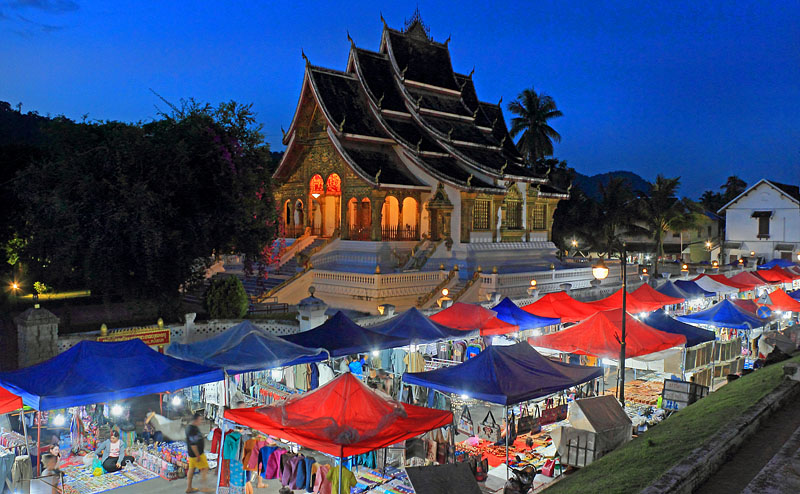
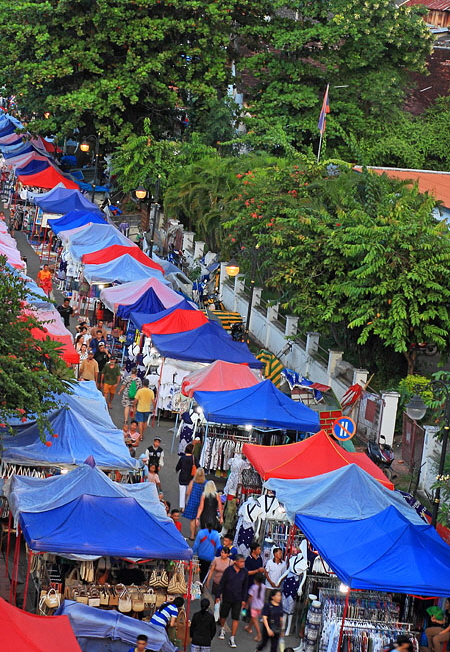
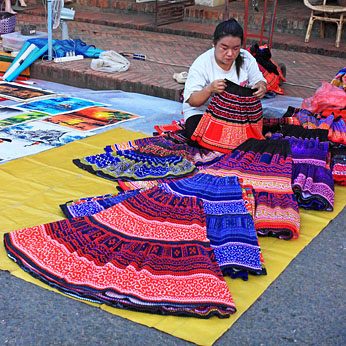
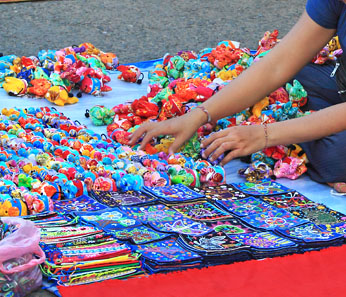
Rambutan fruit
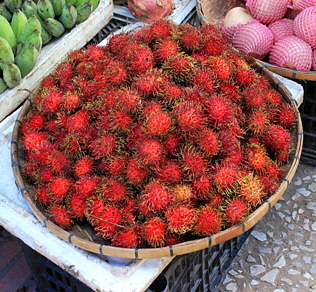
Day Market
This is a delightful couple of streets to be strolling through the early morning - as early as 6 am. It’s mainly a fruit and vegetable market, but also sells kitchen and domestic goods. There are a few street food stalls, and a chance to try some breakfast rice pancakes - served hot. People bring in their locally grown produce and like the night market, neatly display it to attract buyers. It’s where the city folk also buy their meat and fish, including unusual foods like toads and dung beetles.
It’s a great place to buy some tropical fruits like Rambutan, Mangosteen, mangoes and Dragon fruit, and is incredibly cheap. And for a snack, try some banana chips, roasted cashews, or fried bamboo shoots. Even if you don’t buy anything, hang out to savour the atmosphere, and even photograph some of the wonderful things on sale.
Mangosteen fruit
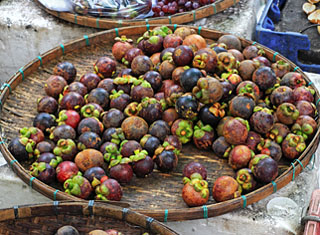
Morning market
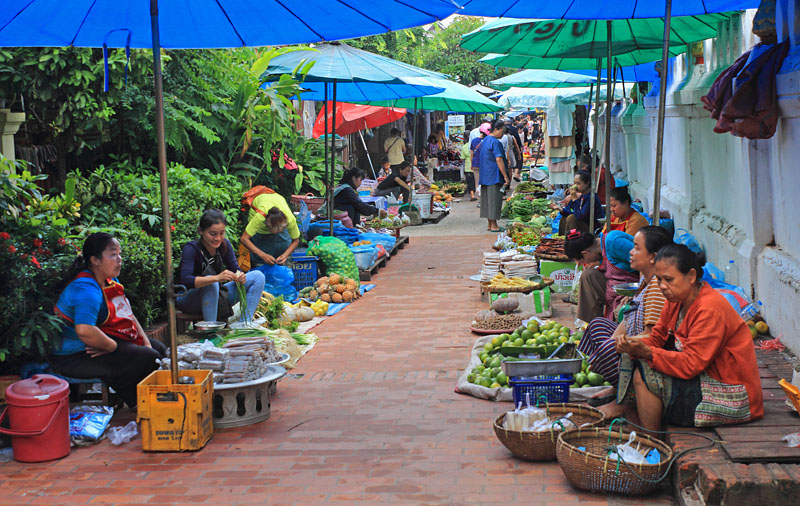
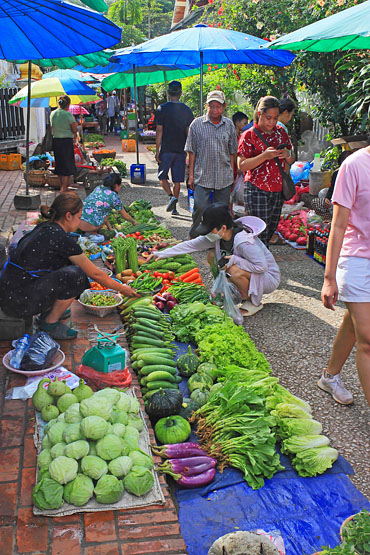
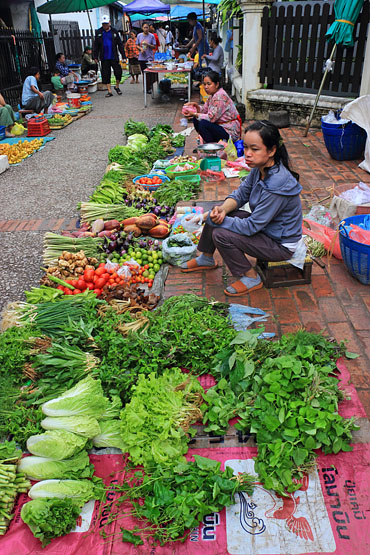

Away from the city - don’t miss out on a day trip or two
Pak Ou Caves
A journey along the Mekong River is a fine day out. Located just 25 km north of Luang Prabang, it takes around two hours upstream to get to the caves. My boat departed from the Nam Khan River and joined with the Mekong at the tip of the peninsula. Along the way gives you a glimpse into the lifestyle of the riverside Laotians. It was a clear blue sky day and the scenery was gorgeous as we passed by colourful houseboats, small fishing boats, and fish farms. The landing site by the caves was already filled with several other tour boats, and quite a crowd was queuing up the steps to reach the caves.
Historically, the caves have been a monastery for more than five centuries. Inside, its spiritual richness is in the form of thousands of Buddha statues in different postures. Most are miniatures, and many are also damaged. I was not too impressed with the interior itself, perhaps partly due to the crowds, making it difficult to appreciate it properly. However, the natural vista of the huge cliffs and limestone outcrops around made it a worthwhile trip.
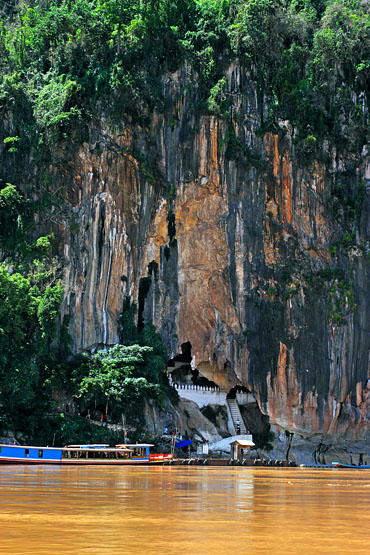
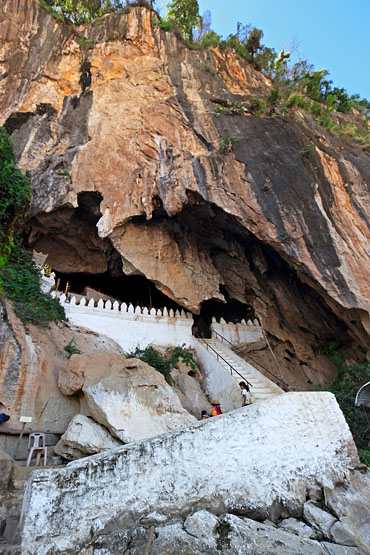
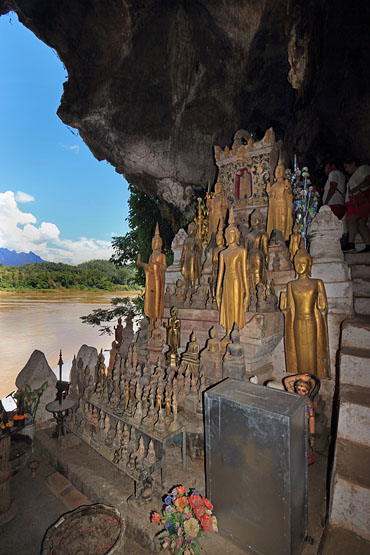
Kuang Si Falls
Just 30 km south of Luang Prabang, Kuang Si Falls is a sight of pure natural beauty. Set in a dense tropical forest, a short hike brings you to the main waterfall. From 60 metres high, it loudly splashes down into the large wide turquoise pool surrounded by jungle vegetation. Several cascading tiered shallow pools flow downstream, inviting you to take a dip in its chilly waters. For the visitor, walkways and bridges are strategically placed to get the perfect views and photos. The falls are popular both with tourists as well as locals.
Weekends are the busiest when it’s a family day out for swimming and picnicking. I was told the best time to visit is in the morning. Unfortunately, I came on a guided tour around midday and had to contend with a couple of hundred others arriving at the same time. Despite the crowds, it was a beautiful place to be.
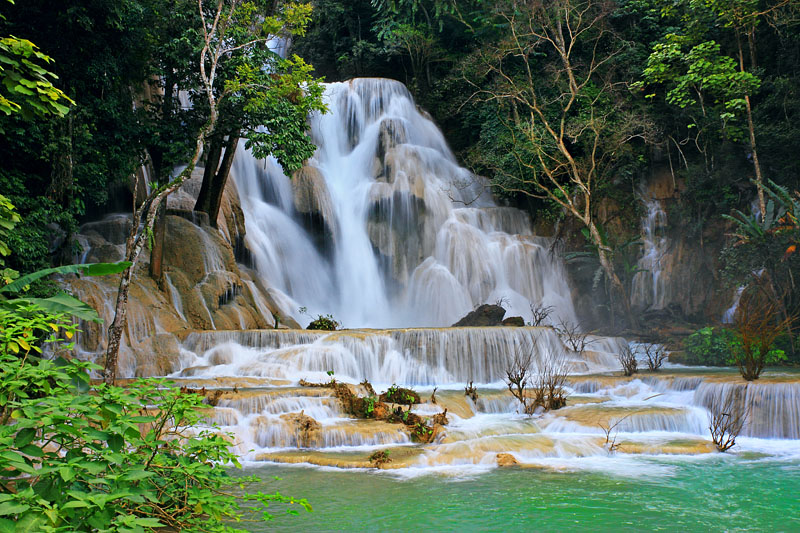
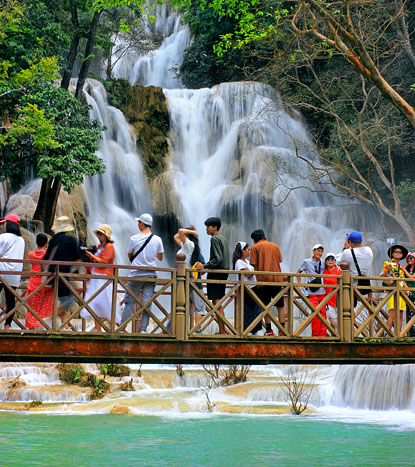
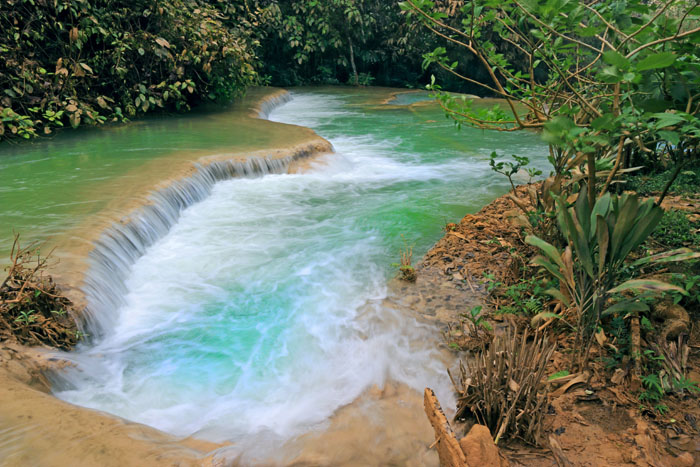
My time in Luang Prabang is unforgettable. It’s a city I felt so comfortable in and at peace. While the tourism revenue is needed, I hope it will not get overcrowded, and that Laotians will not have to put up with disrespectful tourists.
28 images here ©JAYTRAVELPHOTOS
© COPYRIGHT notice. The images on this site are for viewing only.
To purchase any, for personal or commercial use, please contact us at jaytravelphotos@aol.com
___________________________________________________________________________________________________________________________________________
